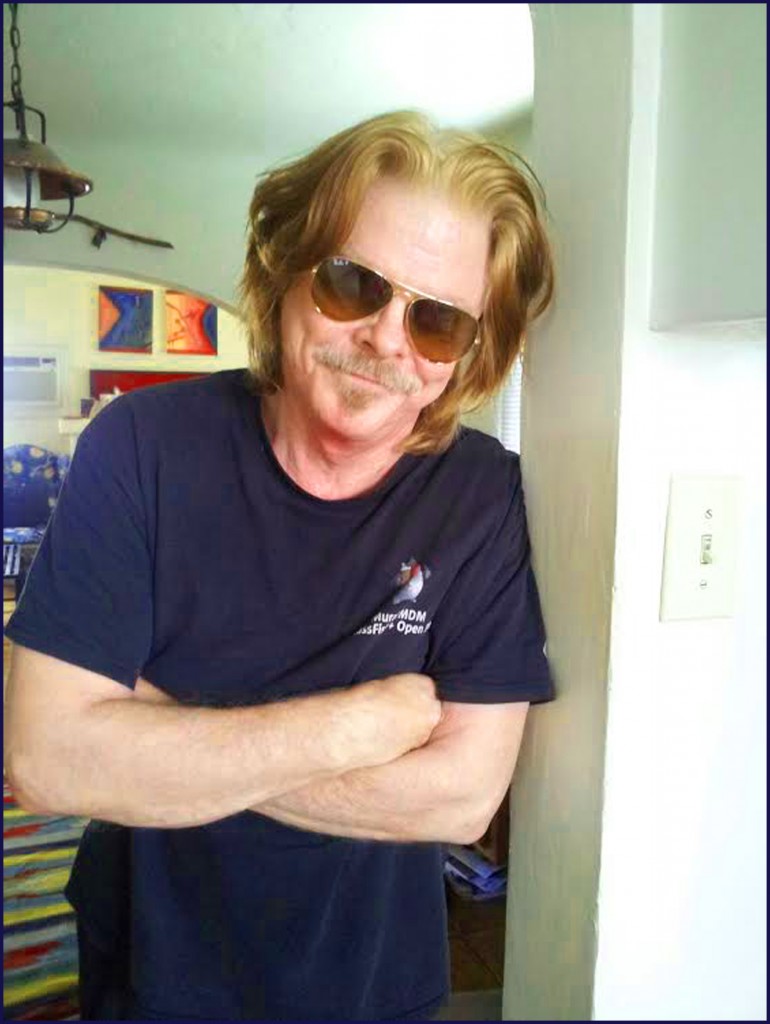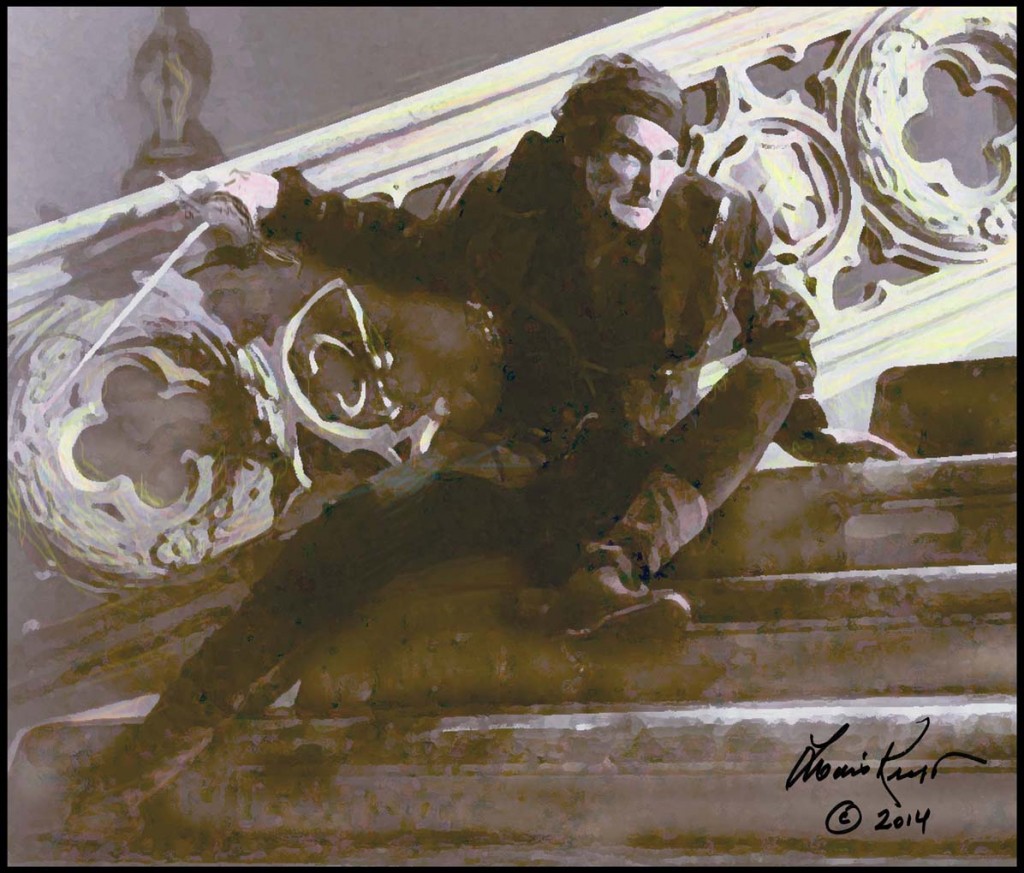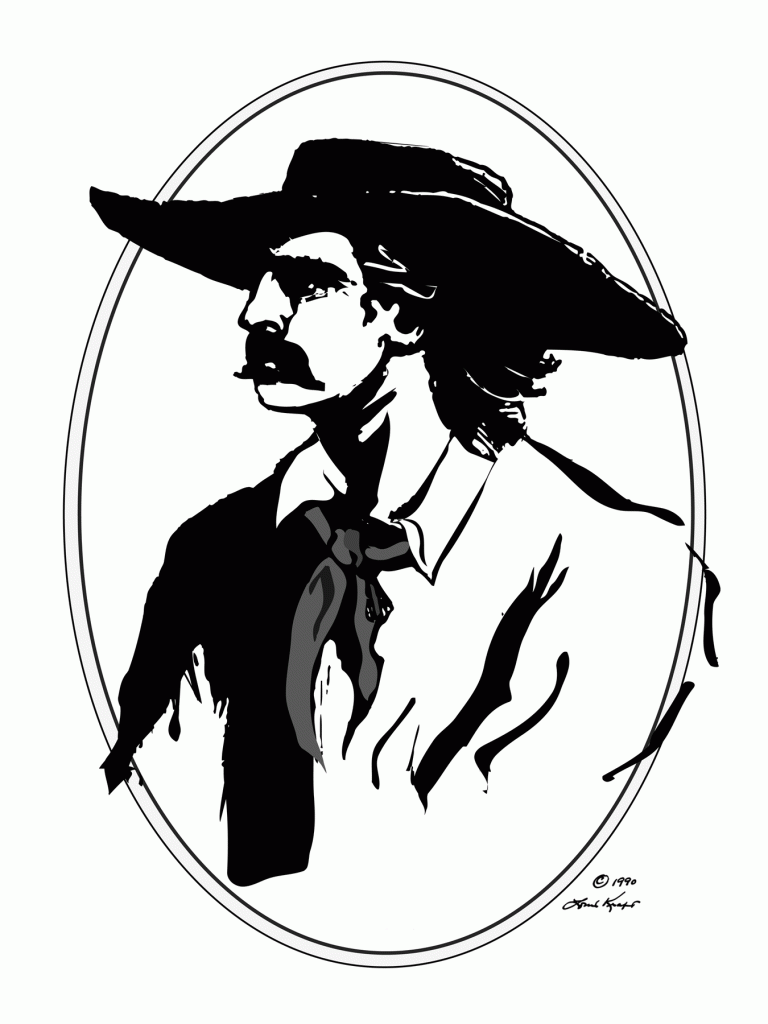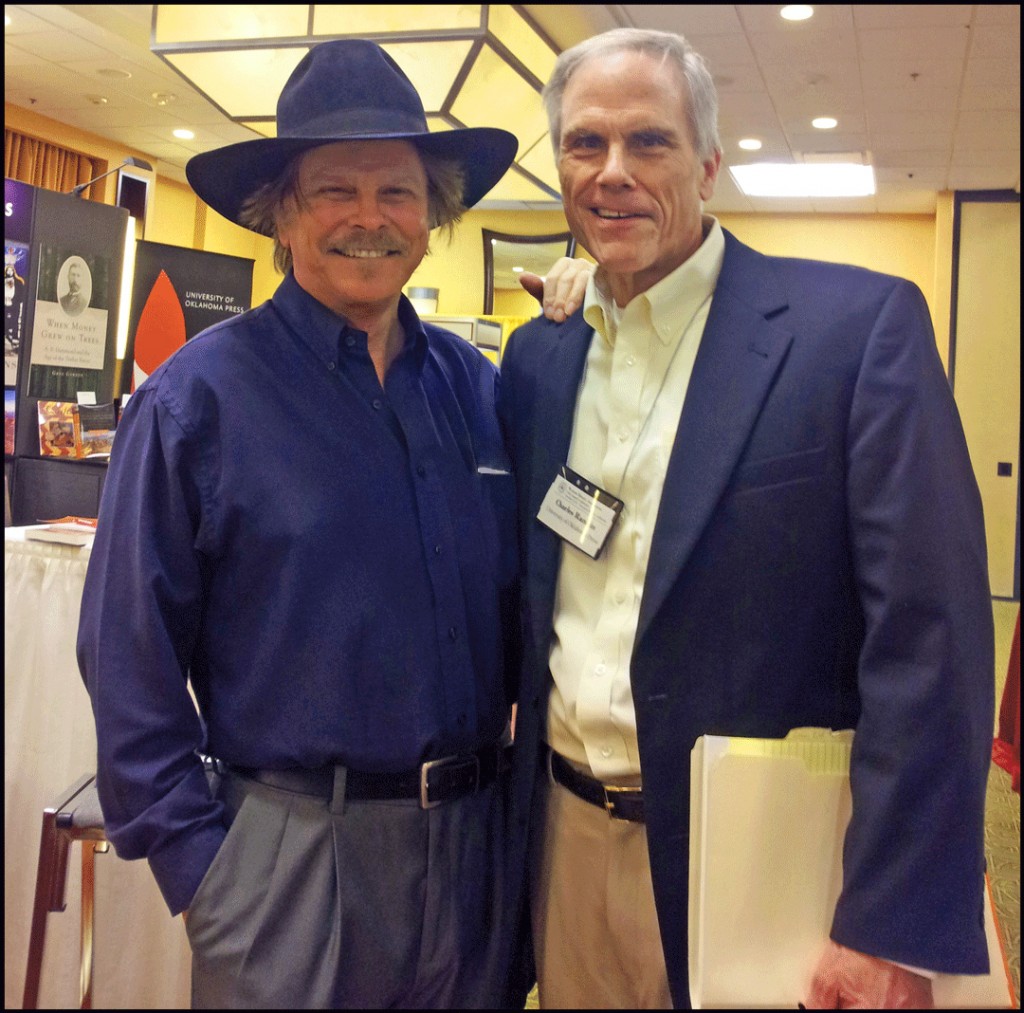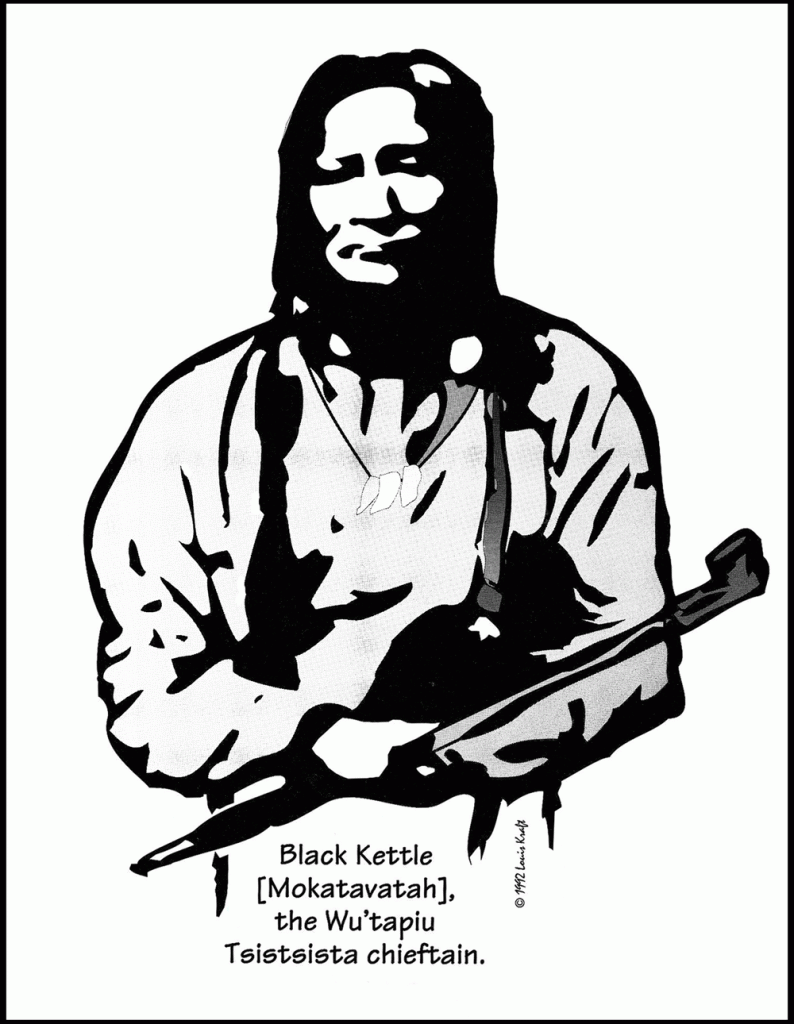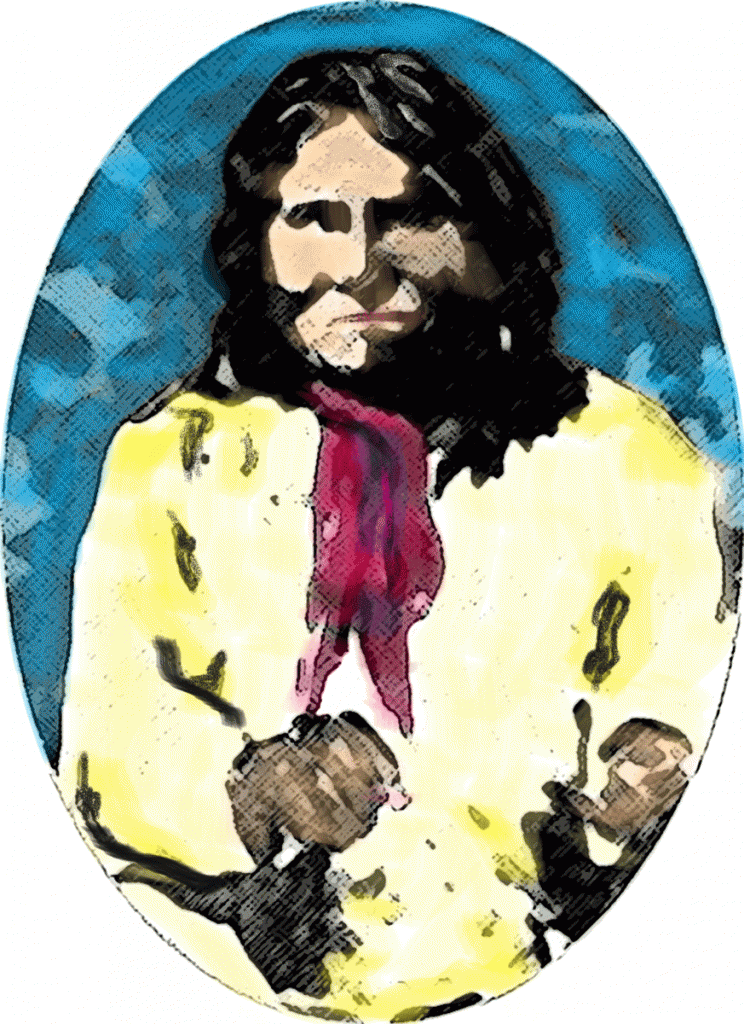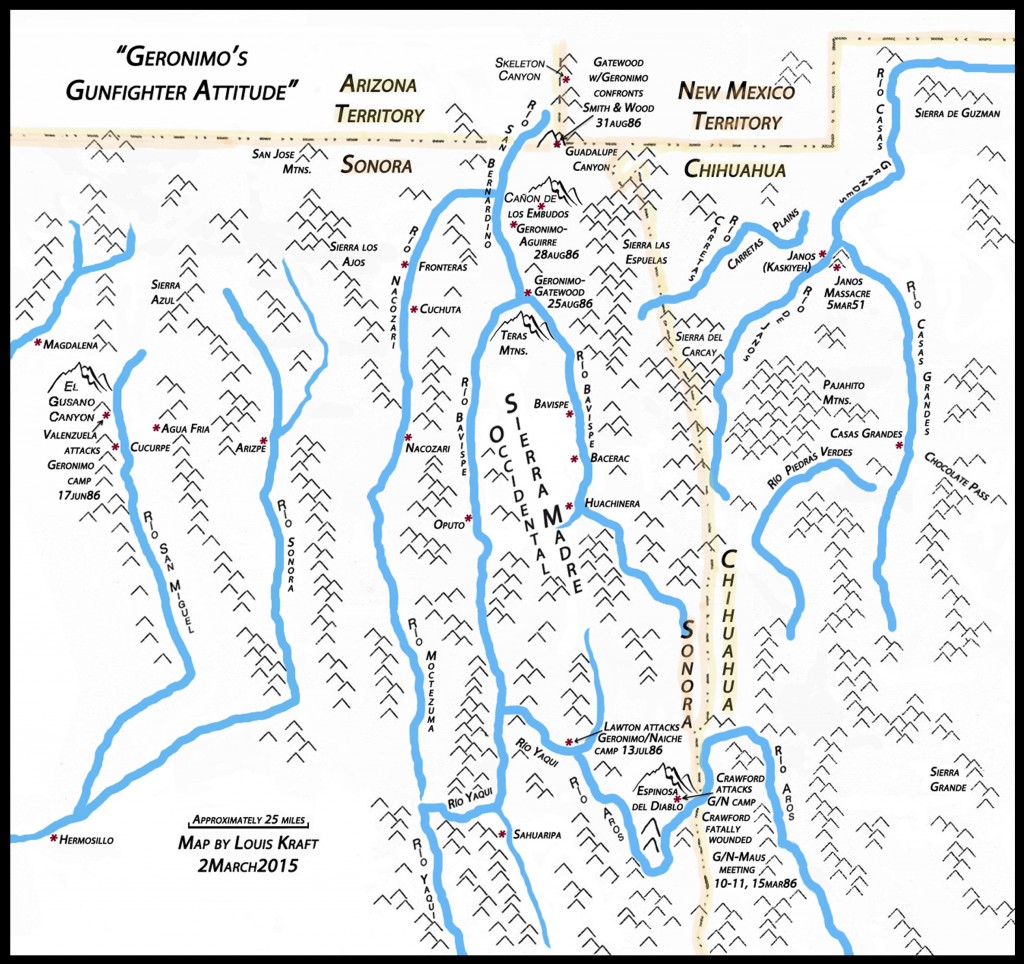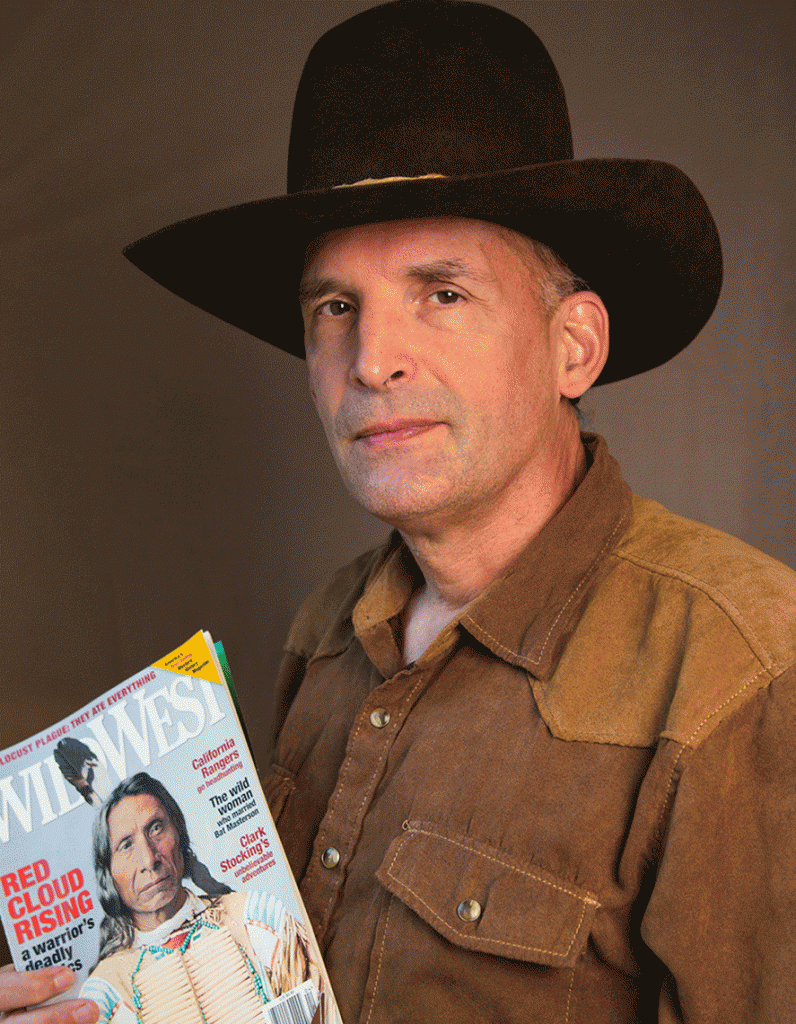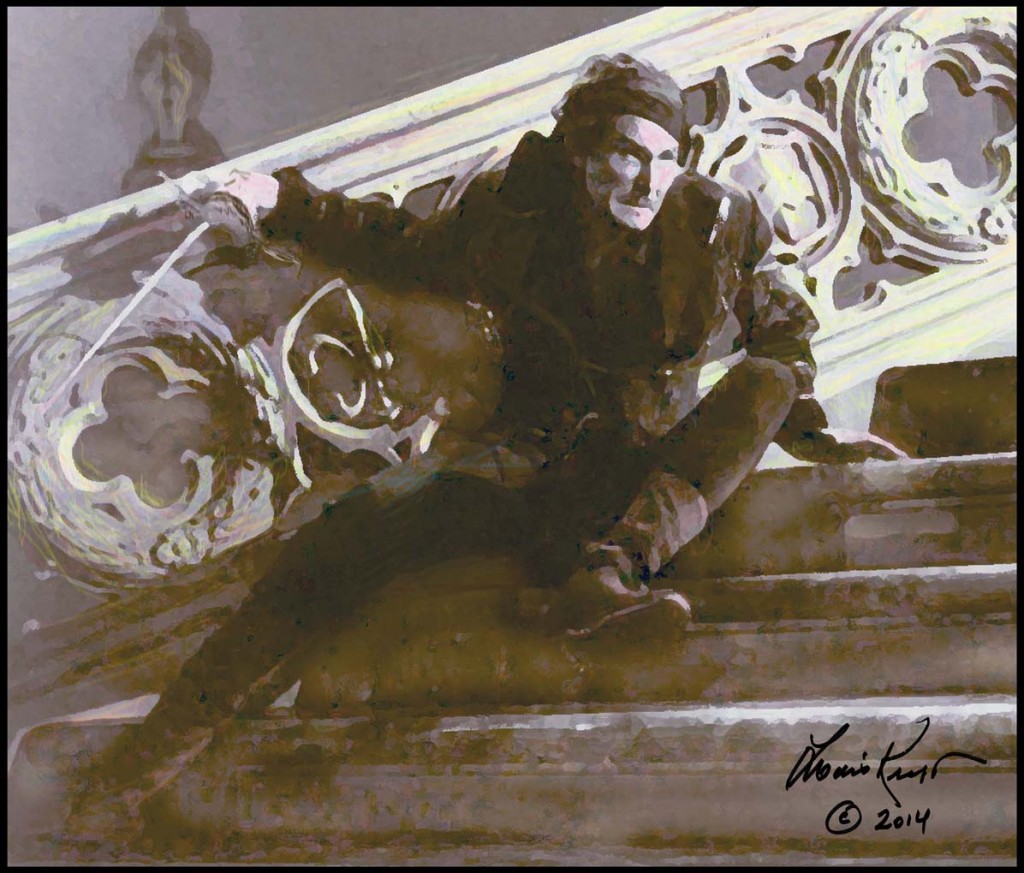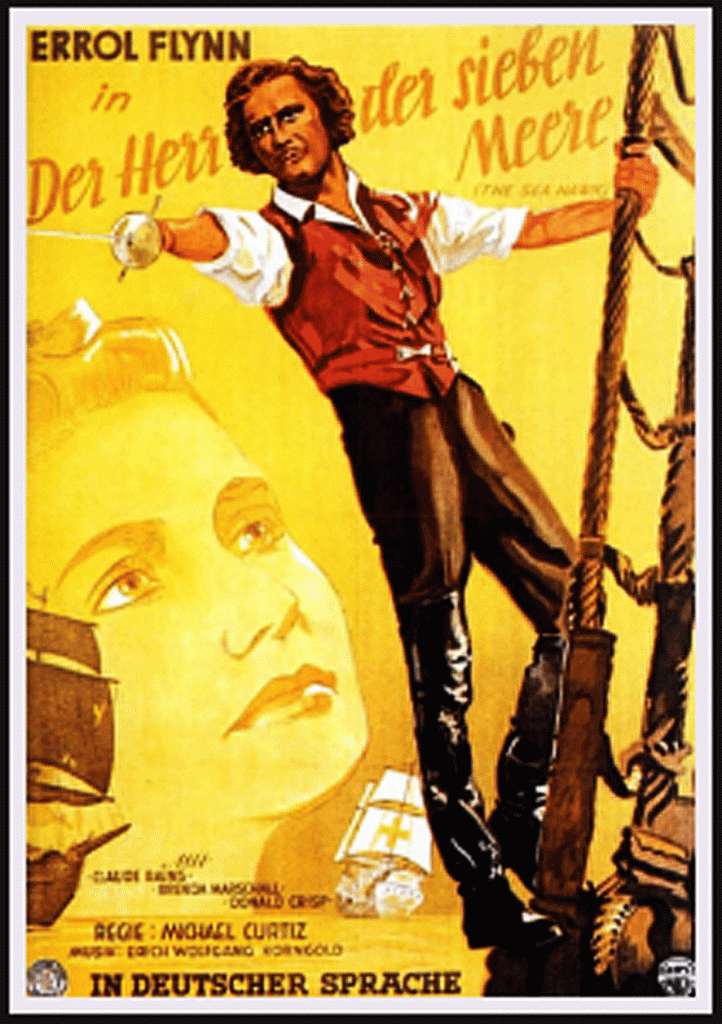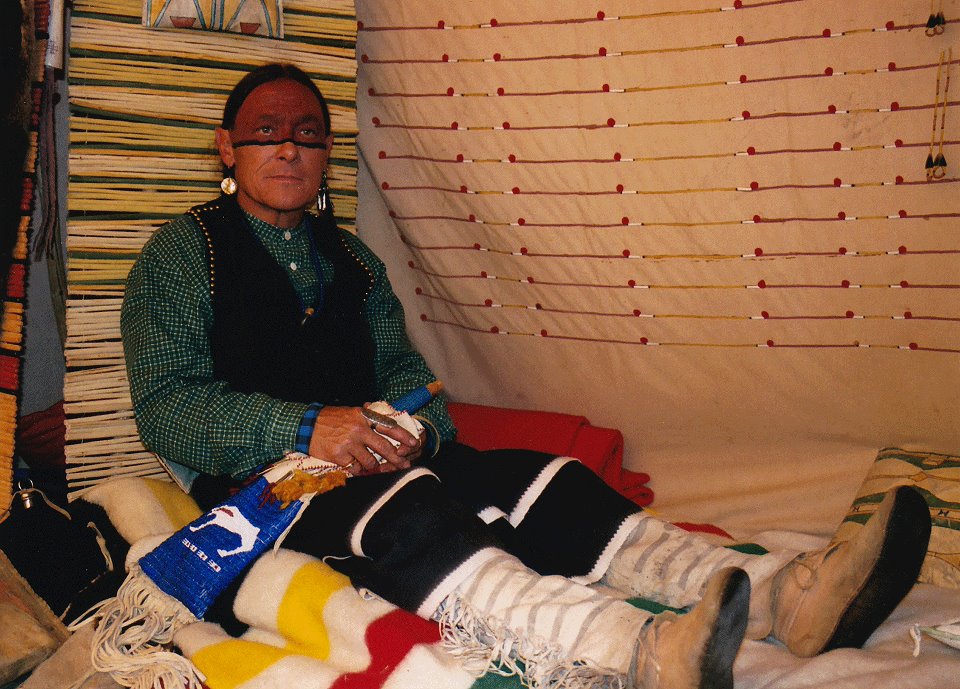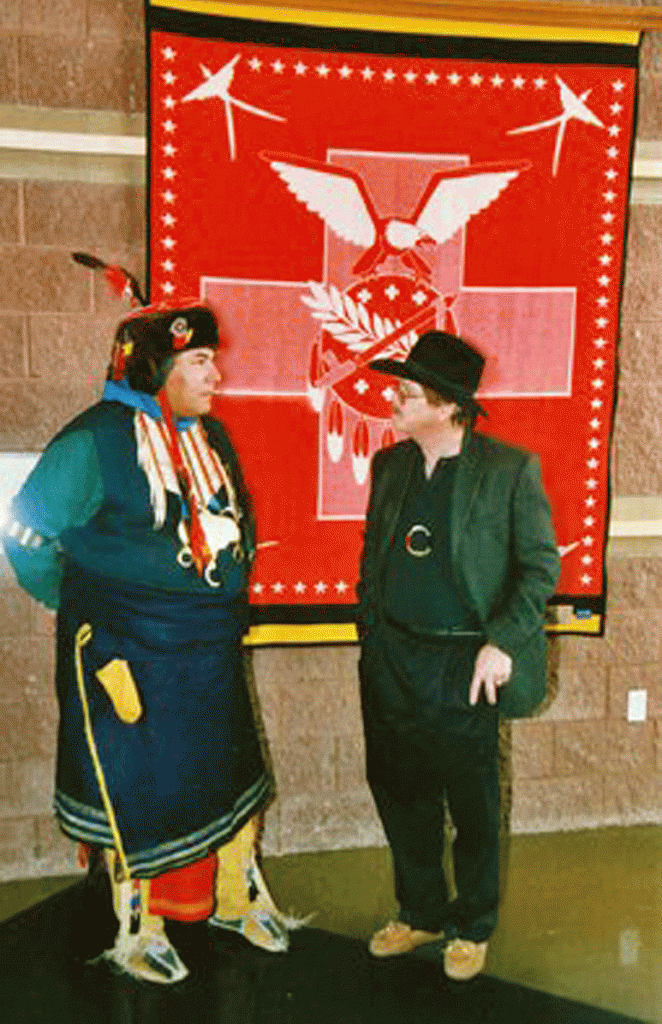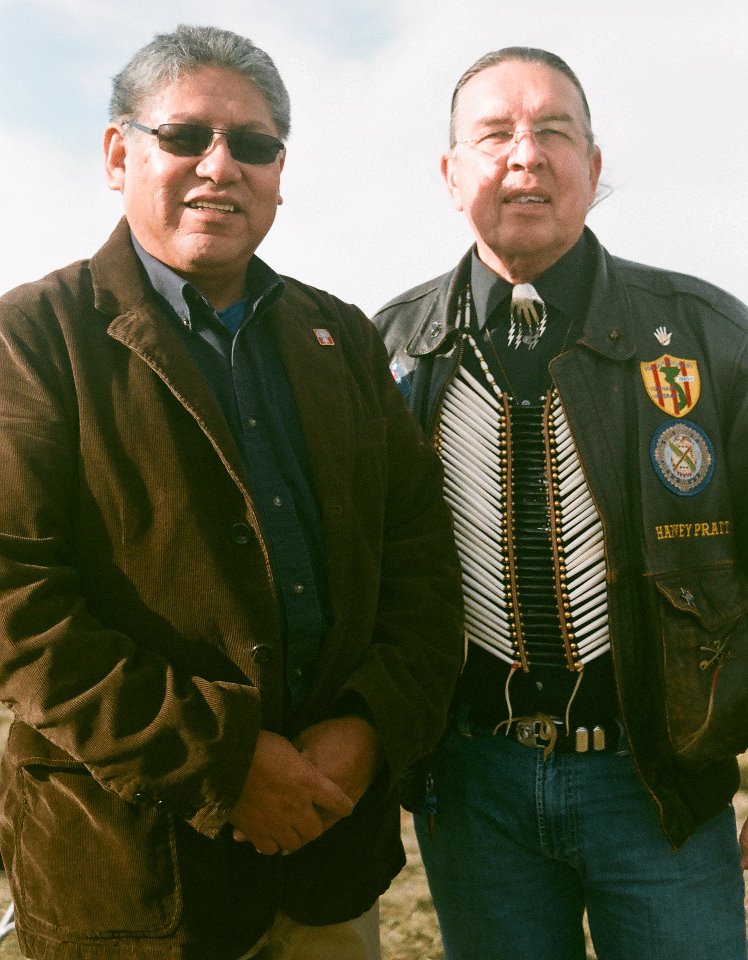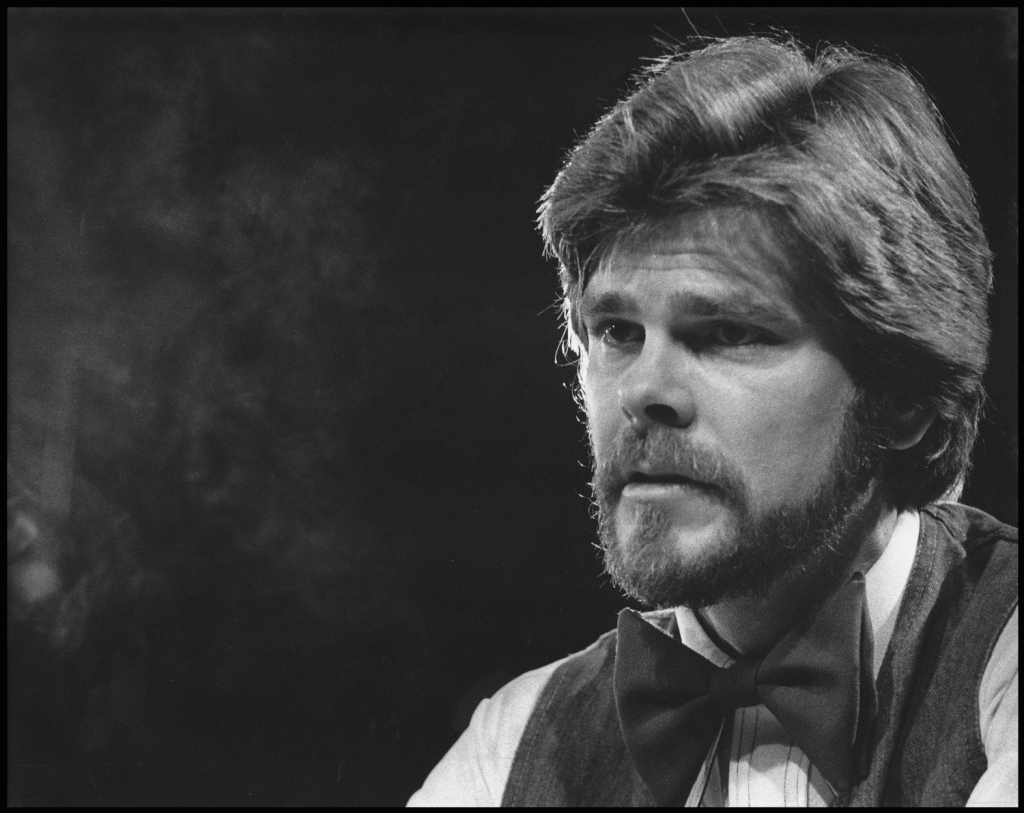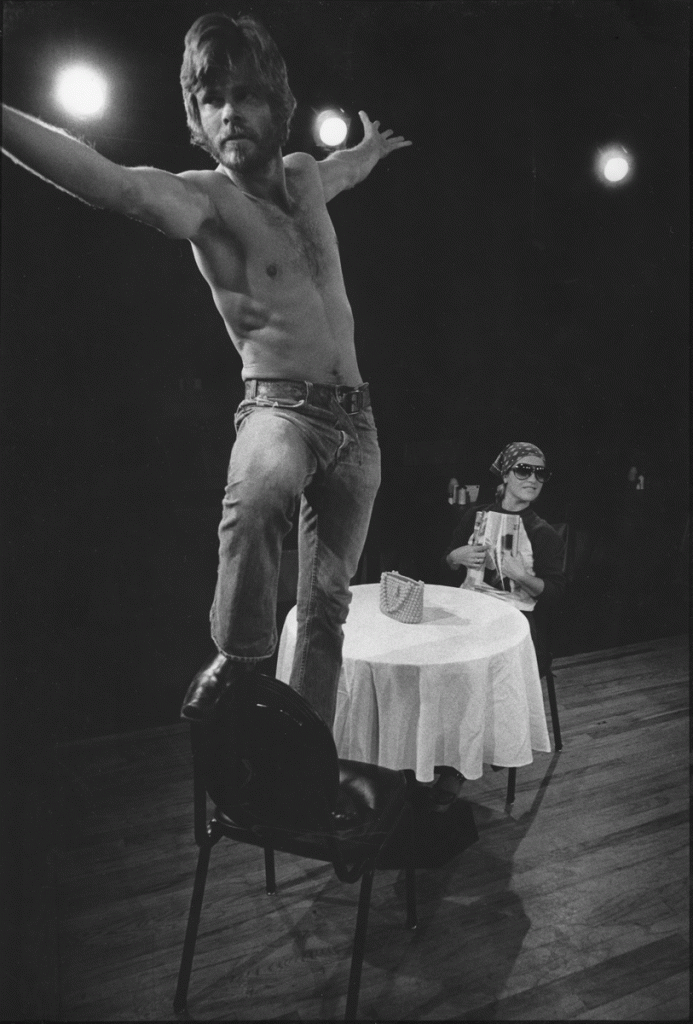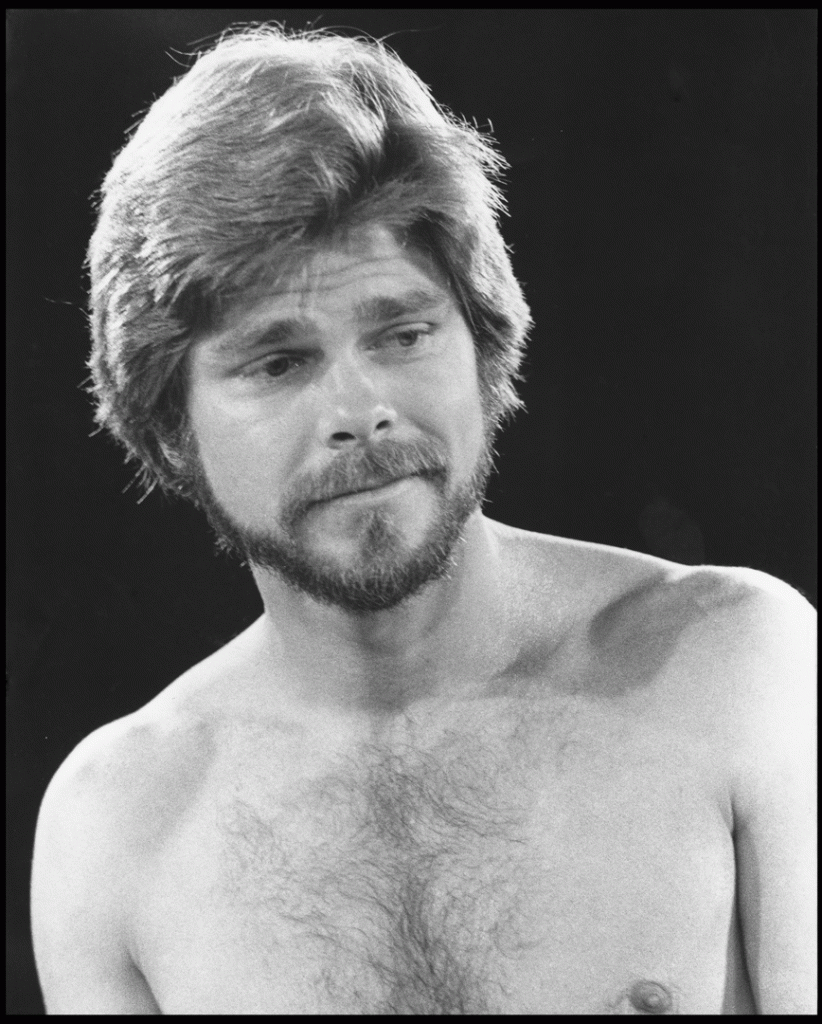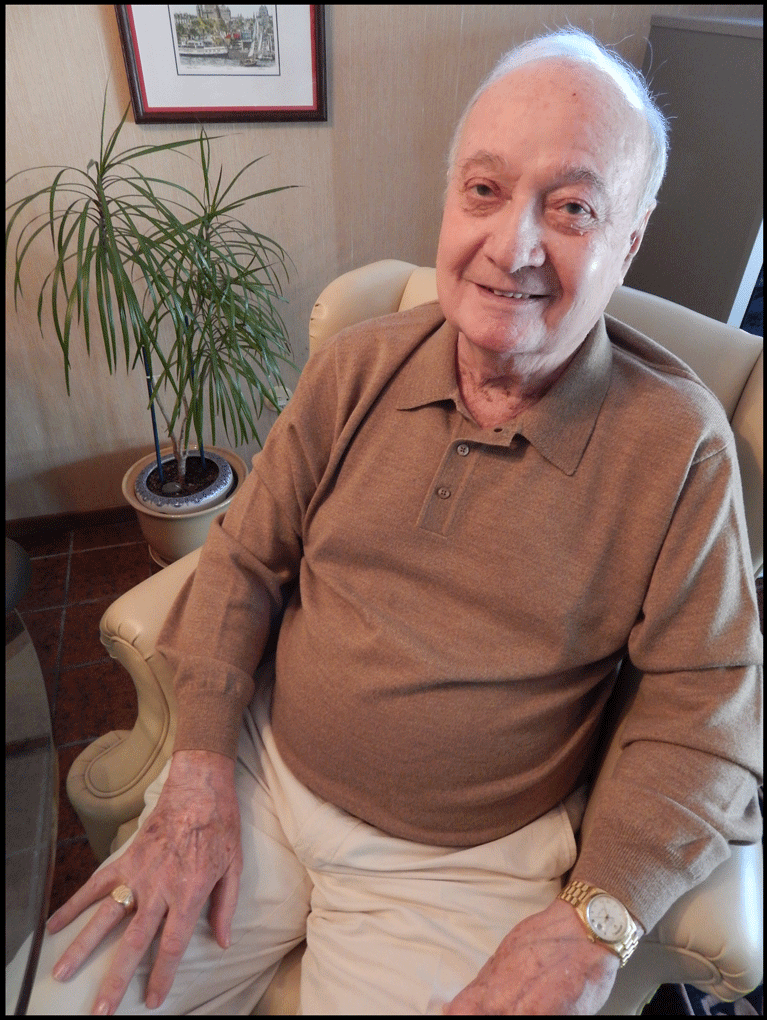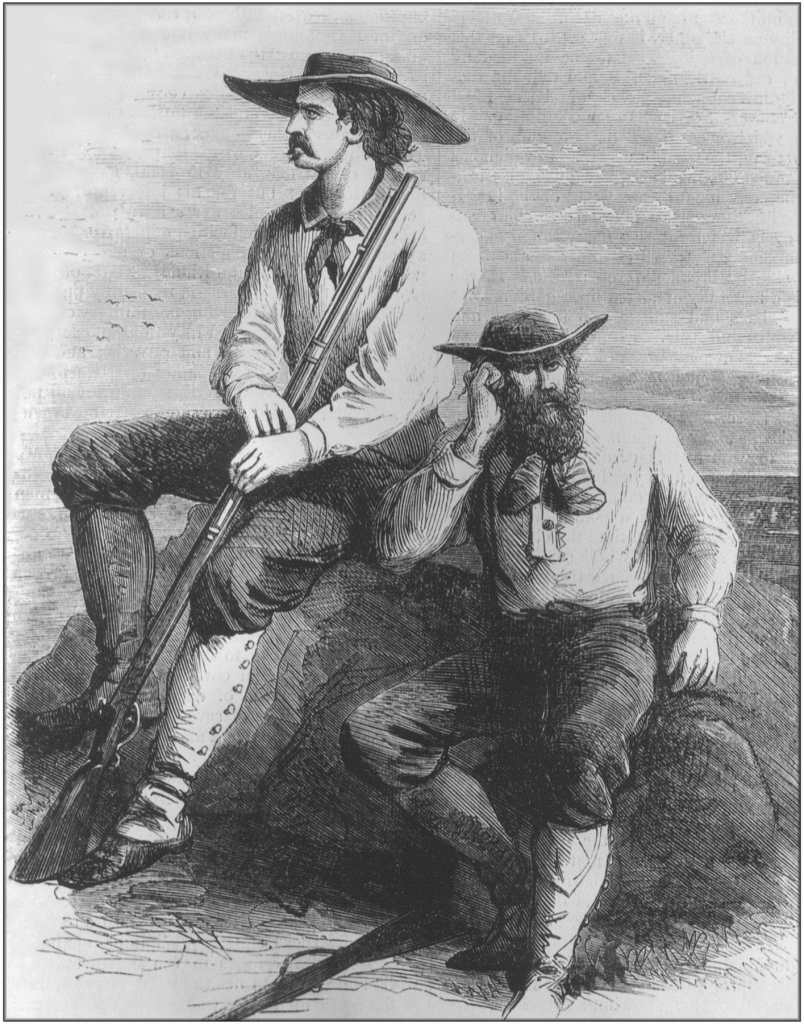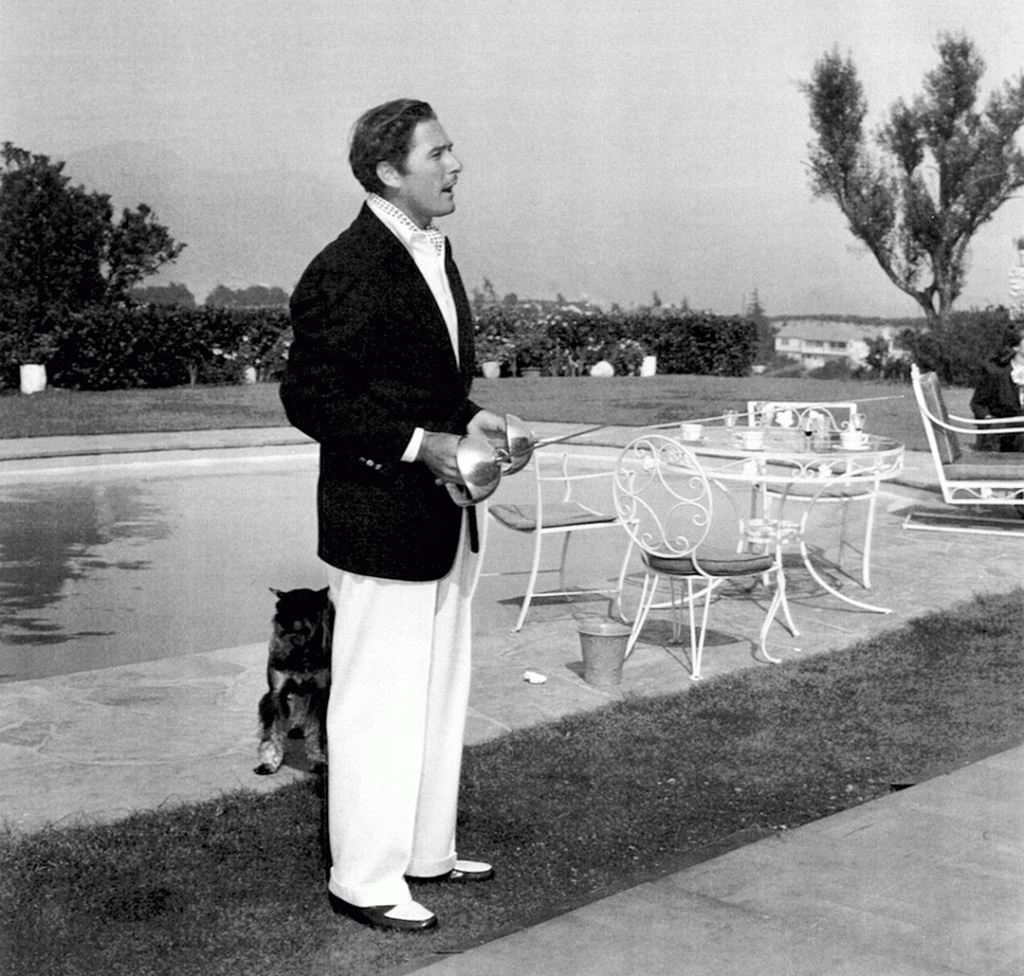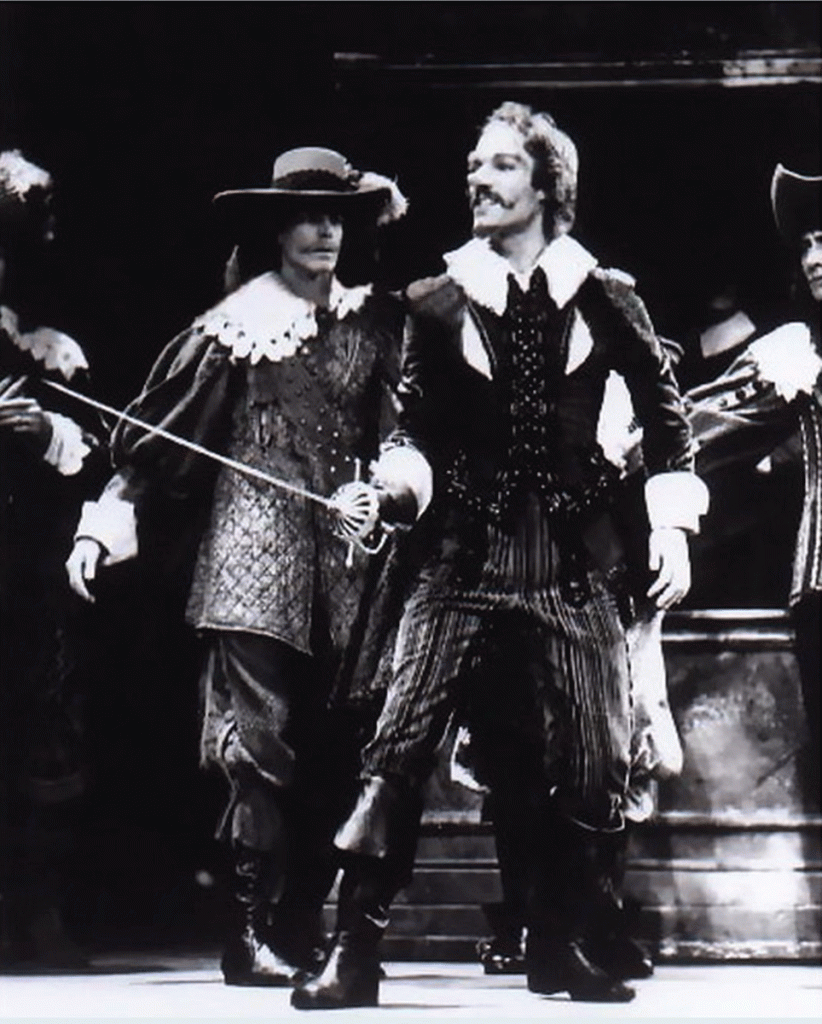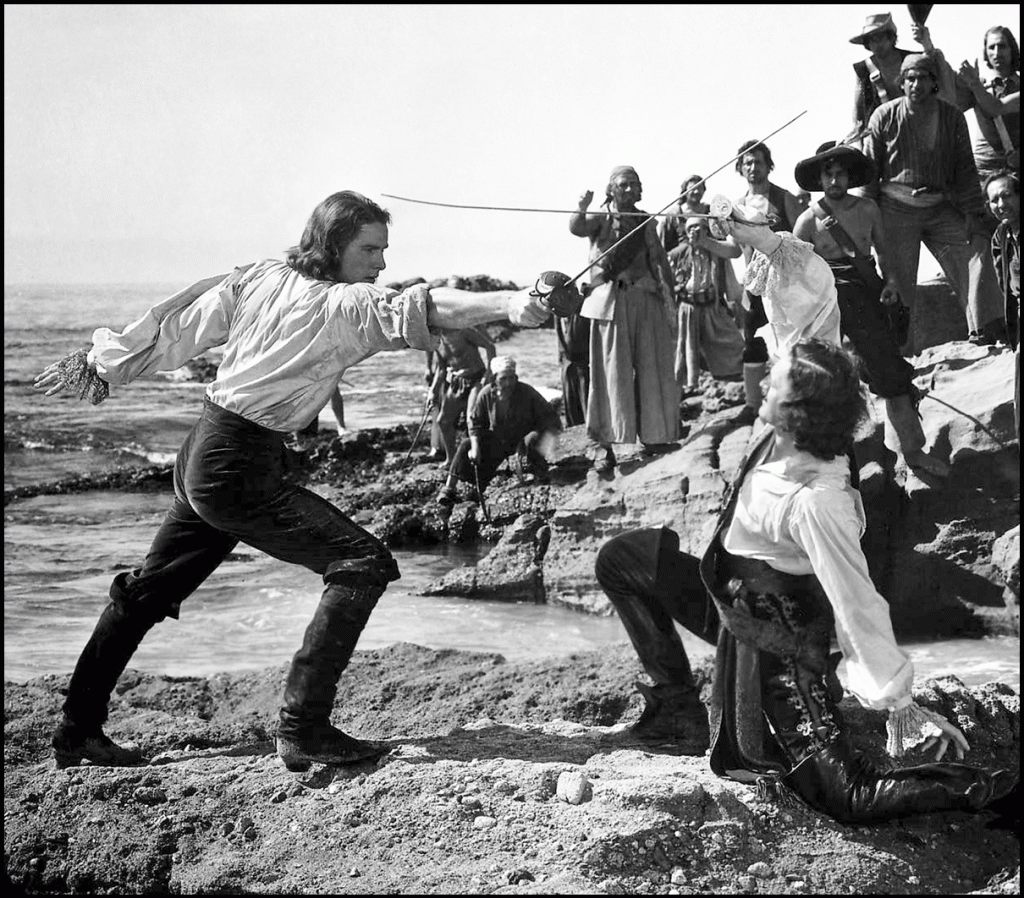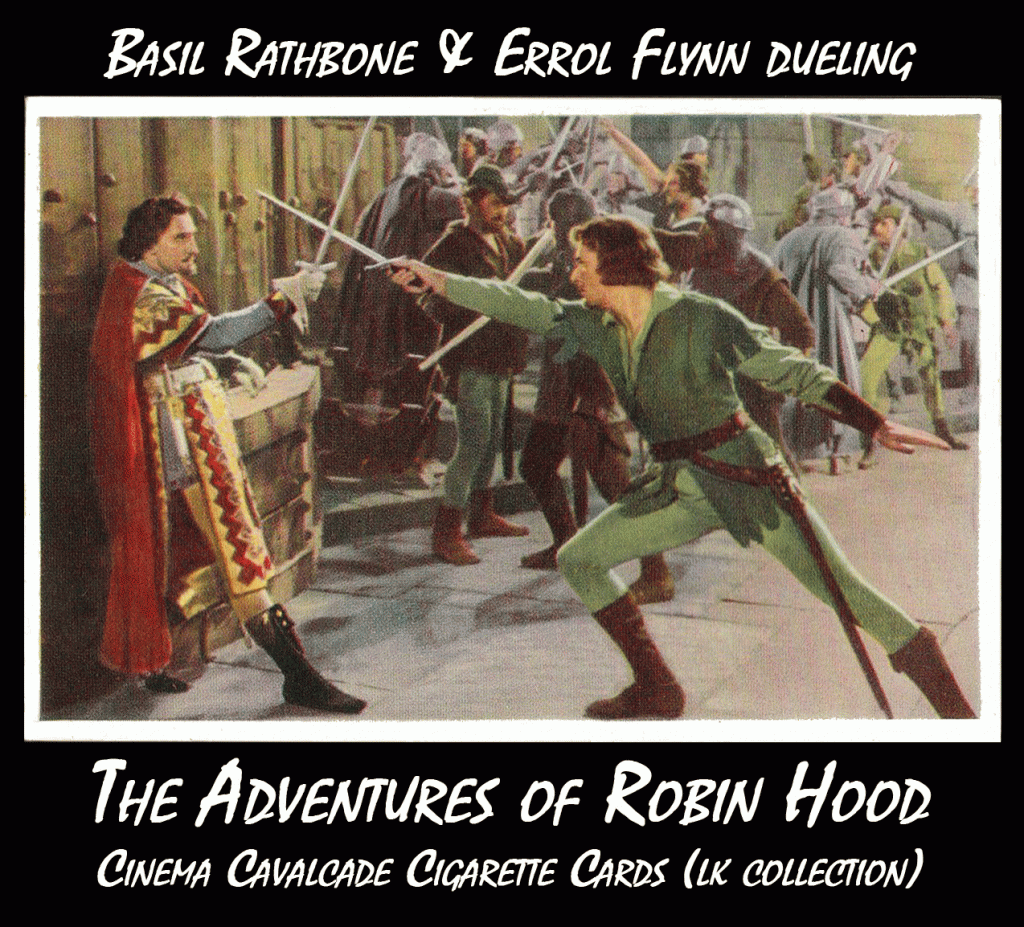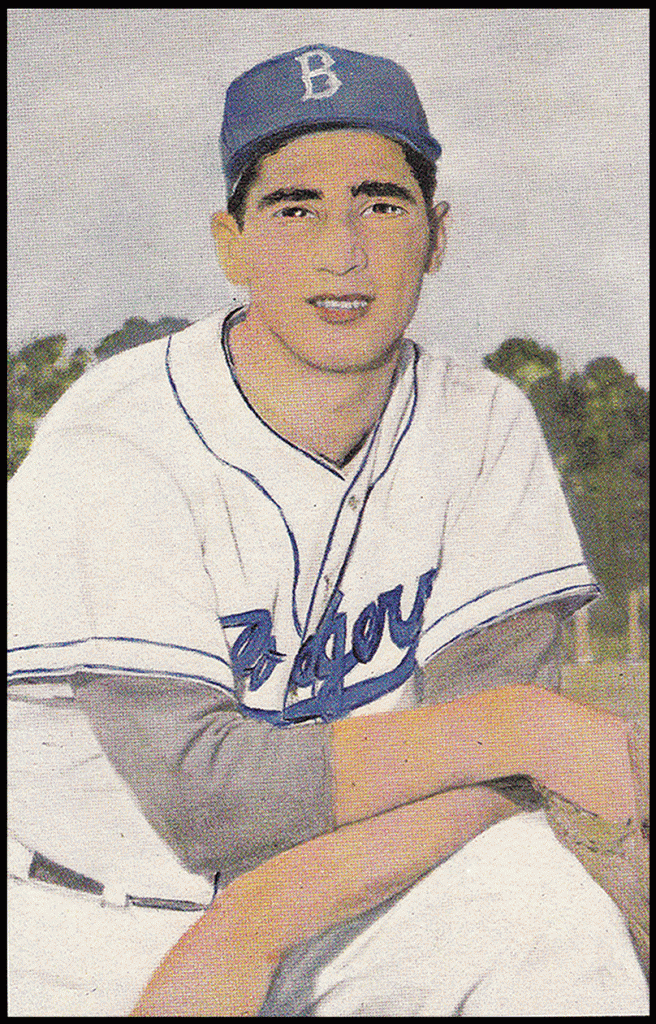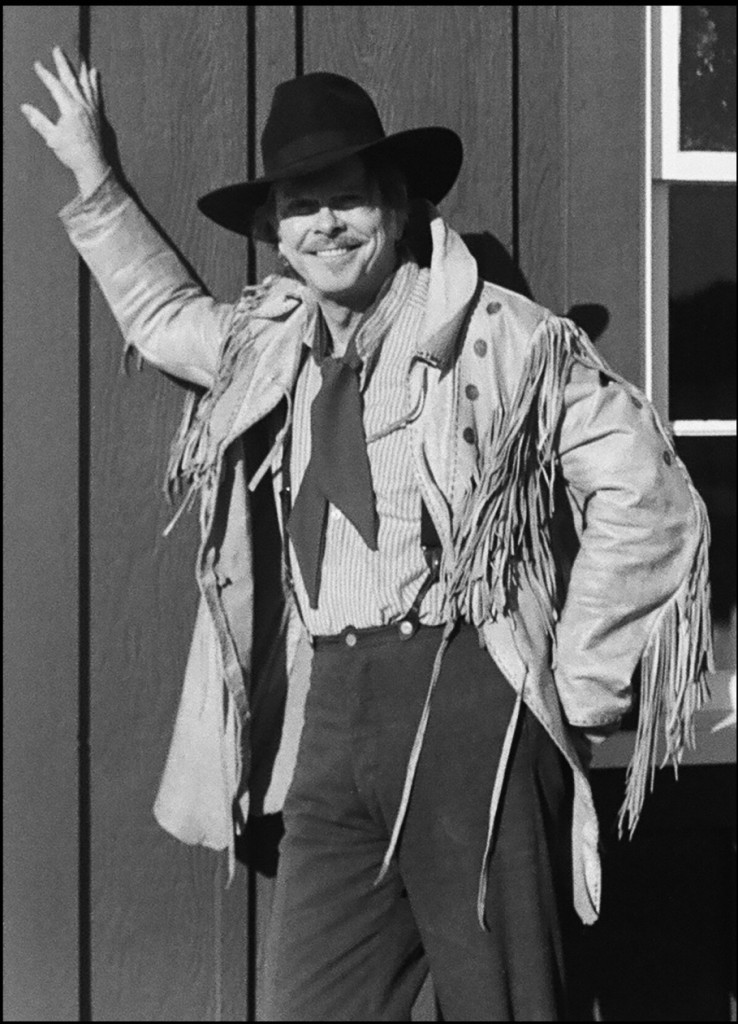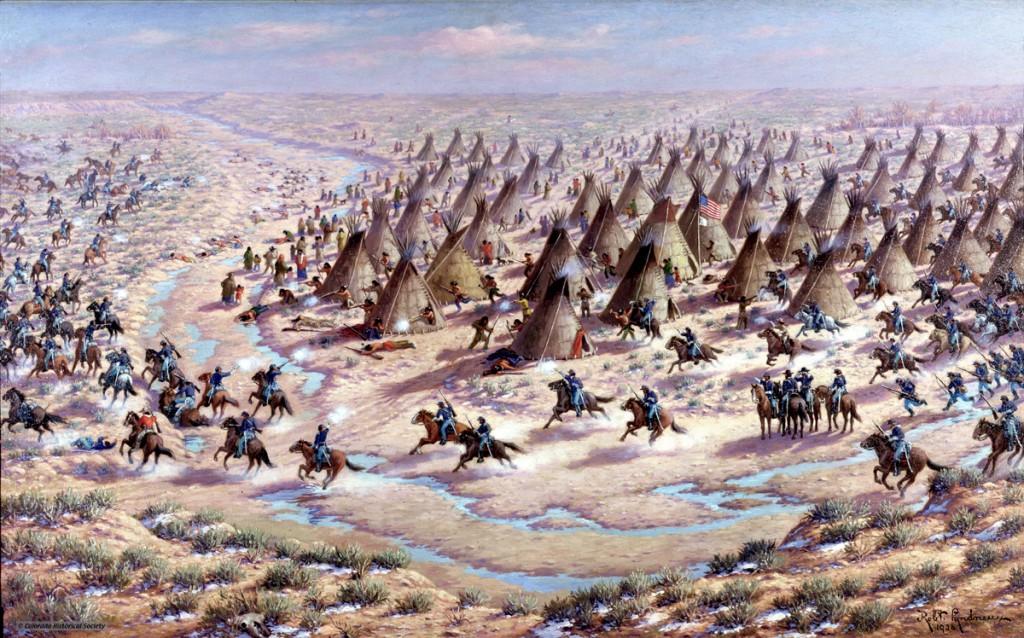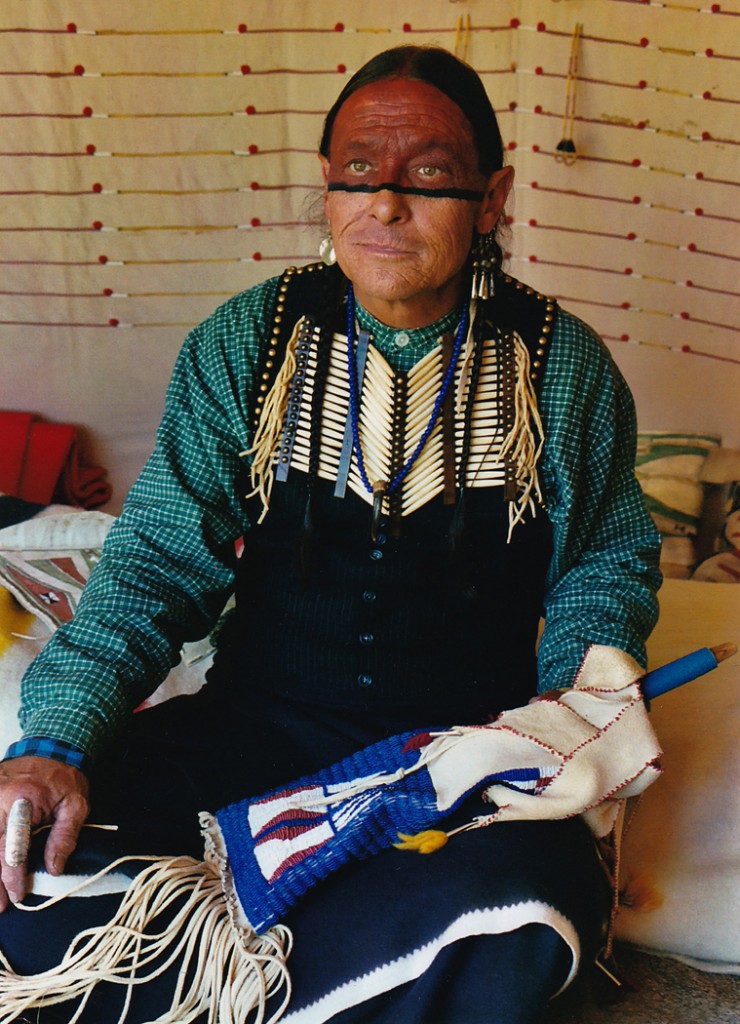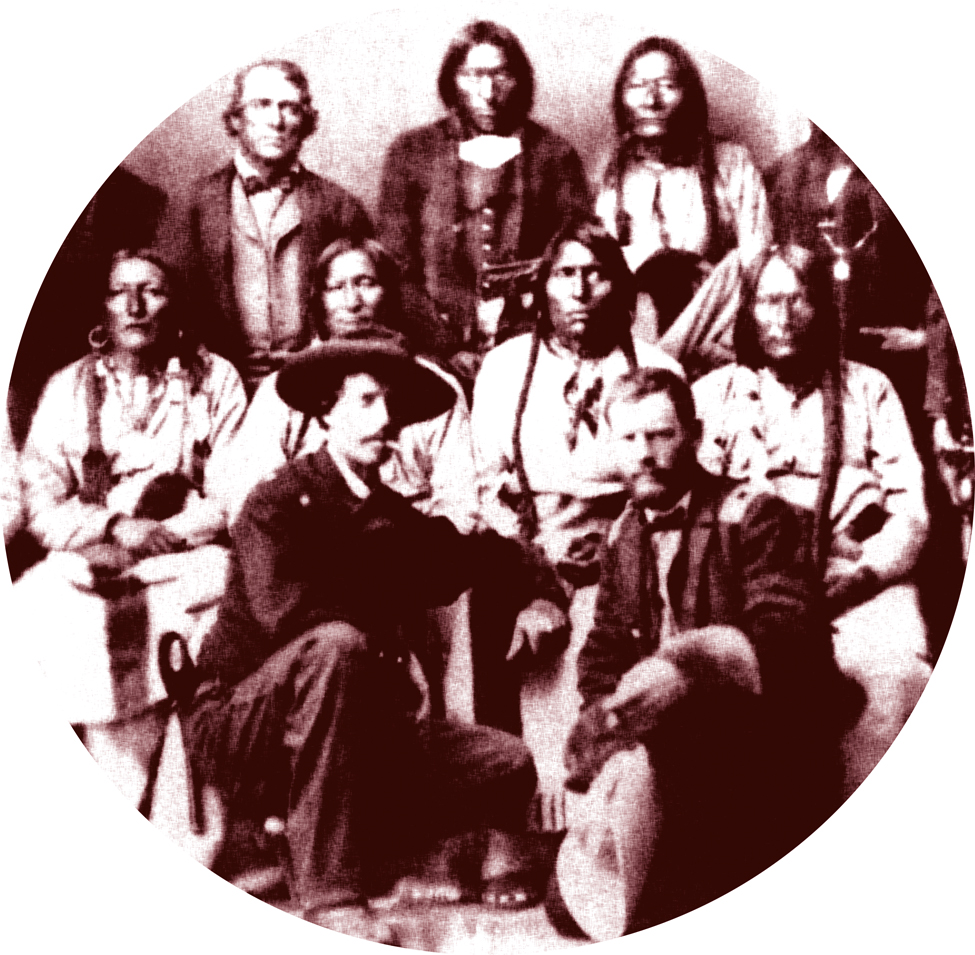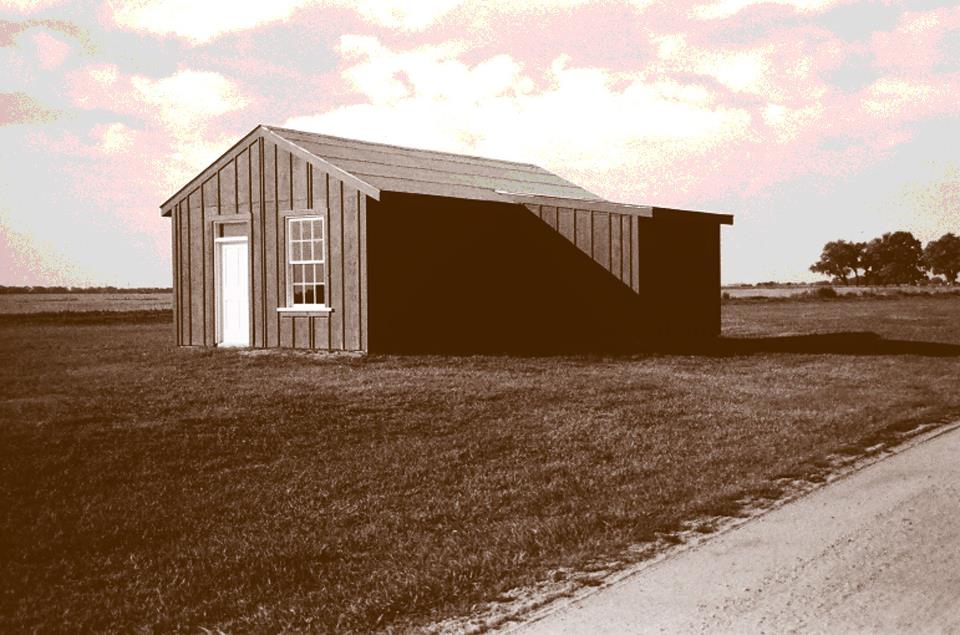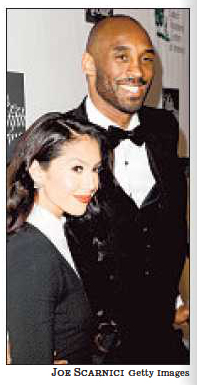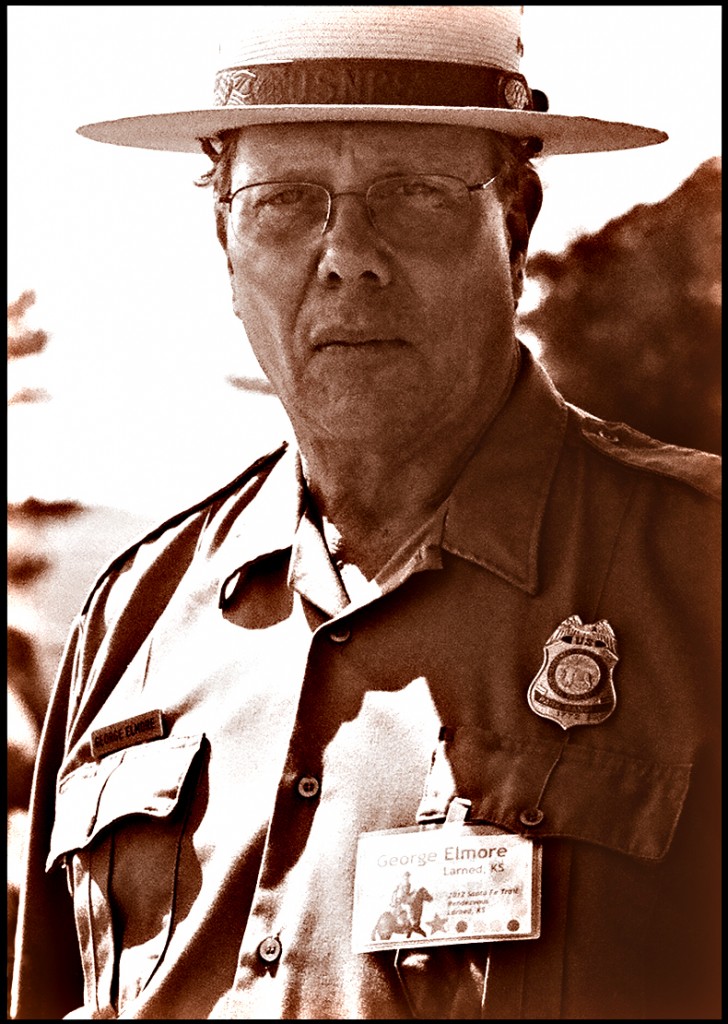Website & blogs © Louis Kraft 2013-2020
Contact Kraft at writerkraft@gmail.com or comment at the end of the blogs
Kraft is slow because he wants to research
everything that makes it into his books. This takes time,
a lot of time. At times it is an ungodly amount of time
and yet it must happen before l can deliver a
manuscript to my editor.
I’d like to make a lot of money on my freelance writing, but that
isn’t the objective. What I really want is to write books that have value
and will outlive me. This is my goal, and it has always been my
goal. … The future will decide if I succeed or fail.
You may ask why I have so often talked about time.
The answer is simply that it is key to all of our lives.
For me, the clock is ticking at lightning speed.
I have work to complete …
and Ladies to protect.
This blog features Rocky Mountain News editor William Byers & Ned Wynkoop
Oops!!!! Sometimes it seems that nothing is easy in my life.
Dumb ol’ Kraft thought that William Byers would be a slam dunk. Since I just used a basketball term I guess that I should continue with the sport that has given me a lot of pleasure during this century. Let’s just say that I thought that Byers would be an easy layup. No-no-no!!!

This image was taken on 5mar2017. My face was lighted by a bay window while the two images on the wall were in almost total darkness. The top image is the poster for the publication of the Wynkoop book. My friend and editor Chuck Rankin gave it to me in 2011. The bottom image is of me as Wynkoop in Ohai, Calif., in 2002. … I have been ripped by a supposed friend, a supposed good writer friend originally from Ojai, Ca., for only writing about one subject—Ned Wynkoop. Pure BS!!!! I’ve written two books about Gatewood and the Apaches and one about George Armstrong Custer and one about Wynkoop. Nothing else needs to be said, other than I need to address this accusation by this oh-so-great writer friend (yes, I’m being sarcastic) who pounded me for not congratulating him for his most recent move from Williams, Az., to the Phoenix area, while asking me what happened to my Thai girlfriend. He failed to not only remember Pailin’s name, but also that I had sent him a long email about our marriage. That was the final straw for I could take no more from this egotistical prick. I had read all of his clichéd crap over the years (and was kind, an understatement), but no mas. I pounded his piss-poor subjects and inferior writing and said, “adios.” (photo © Louis Kraft 2017)
When I started my current inter-library loan request I was shocked. The Los Angeles Public Library system is huge (100 branches, and the main branch in downtown LA is magnificent). There were no biographies on Mr. Byers, who was one gutsy fellow, and better one of the most important figures during Denver City’s birthing years. He knew what he wanted for the city, for Colorado Territory, and eventually for statehood. Byers shot for the moon and he had no problem going after his competition or those who opposed him. … I have a T-shirt that simply says: pen > sword. I agree with this, and I think that William Byers would have also. Byers was not a man who carried a gun and shot people, but he had guts and then some. I think that if I had had the chance to have met him that we would have gotten along as long as I didn’t oppose his plans. If I did, woe to Kraft for whatever good press he might have given me would have gone up in smoke quickly.é
Those of you who have read Ned Wynkoop and the Lonely Road from Sand Creek (University of Oklahoma Press, 2011) know who William Byers was. For those of you who haven’t read my book on Wynkoop and who are clueless of who Byers was I hope the following introduces you to him. … I hope that the following introduces you to a magnificent man who had decided to publicize the new land that also happened to be to east of the Rocky Mountains in an area that would eventually become the boom town of Denver City. He, like Ned Wynkoop, would face many adversities for his views and, like Wynkoop, this could have led to a violent death on numerous occasions.
Byers and Wynkoop began their relationship when they met in Omaha, Nebraska Territory, in early January 1859. At this time Wynkoop provided details about the gold fields near the confluence of the South Platte River and Cherry Creek, but these details were mostly based upon rumors as mining was then on hold until the following spring when temperatures warmed. Byers gobbled up what he heard as he was then writing a book that publicized the so-called “Pike’s Peak Region.” It and other books would send hordes of men west in the hope of becoming rich. Most would fail.
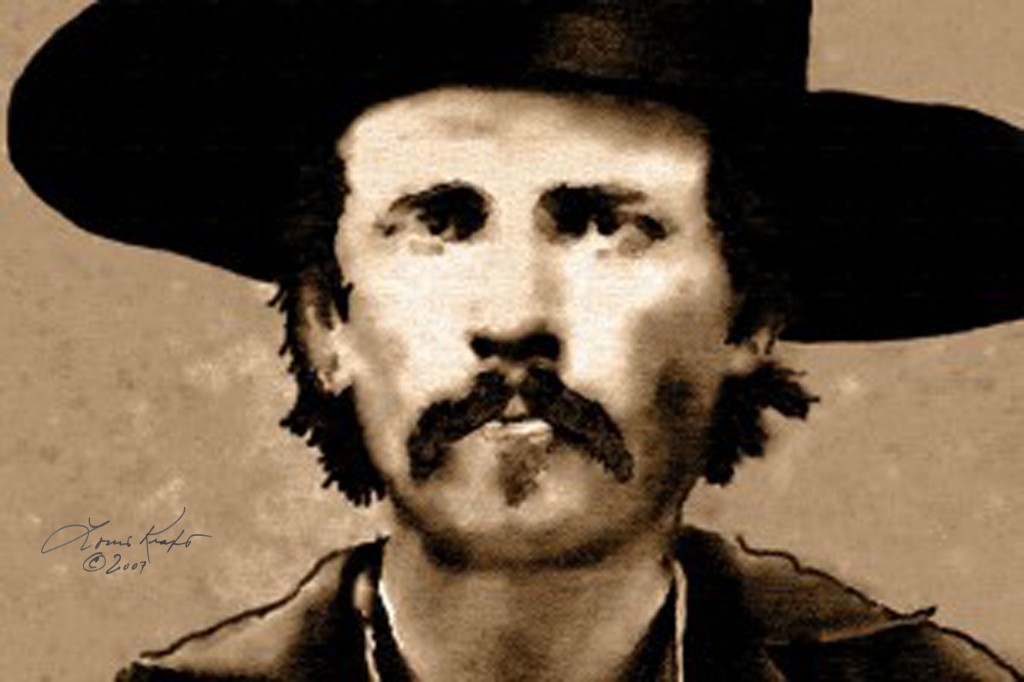
This is a variation of an image that I created of Wynkoop for an article I wrote for Custer and His Times Book Five. “Ned Wynkoop’s Lonely Walk Between the Races” was published in 2008. The art has appeared in four or five publications since then, with the most important being an article that I wrote for Wild West magazine, “When Wynkoop was Sheriff,” which was published in April 2011. Again, this is a variation, for the image printed in Wild West was an oval and it wasn’t a duotone. (art © Louis Kraft 2007)
Byers and Wynkoop hit it off that January of 1859. It wasn’t long after their meeting that Byers would set off for the gold fields; he arrived in Denver City in April 1859 and began publishing the Rocky Mountain News soon after. Wynkoop, who had braved the dead of that 1858-1859 winter reached civilization shortly after meeting Byers. He presented the Denver City Town Company’s claim only to fail and not secure the reason for his trip. There was one thing about Wynkoop. Like Byers, he never turned his back on what he thought right, and he refused to quit even though the bid had failed. Wynkoop continued to push for the town company; he also negotiated with the St. Charles Town Company, whom his land group had claim-jumped. Even at this early age Wynkoop was good with words, had charm, and prevailed in merging the two land development companies.
Upon his return to Denver City in fall 1859 Wynkoop and Byers became friends even though Ned survived by the seat of his pants while Byers and his wife Elizabeth socialized with the elite of the booming town.
This would soon hit the fan when Byer’s wife went ballistic with Wynkoop’s future lady. For some reason Byers refused to take sides in this altercation. Actually Byers often allowed Wynkoop to get away with his transgressions wherein if someone else had done what Ned had Byers would have attacked that person in print. To me it appears that the two men had a good friendship to the point that Byers mostly turned his back on his friend’s actions and mostly kept those wherein he stepped outside the law out of the press. But then that terrible event of November 1864 happened, and Wynkoop, then an officer in the First Colorado Volunteer Cavalry but not present when Chivington’s command attacked the Cheyenne and Arapaho village circles at Sand Creek on 29nov1854, refused to keep his opinions silent. Byers had been able to turn his back to a lot of his friend’s antics and indiscretions but not his vocal view that innocent men, women, and children had been murdered and butchered.
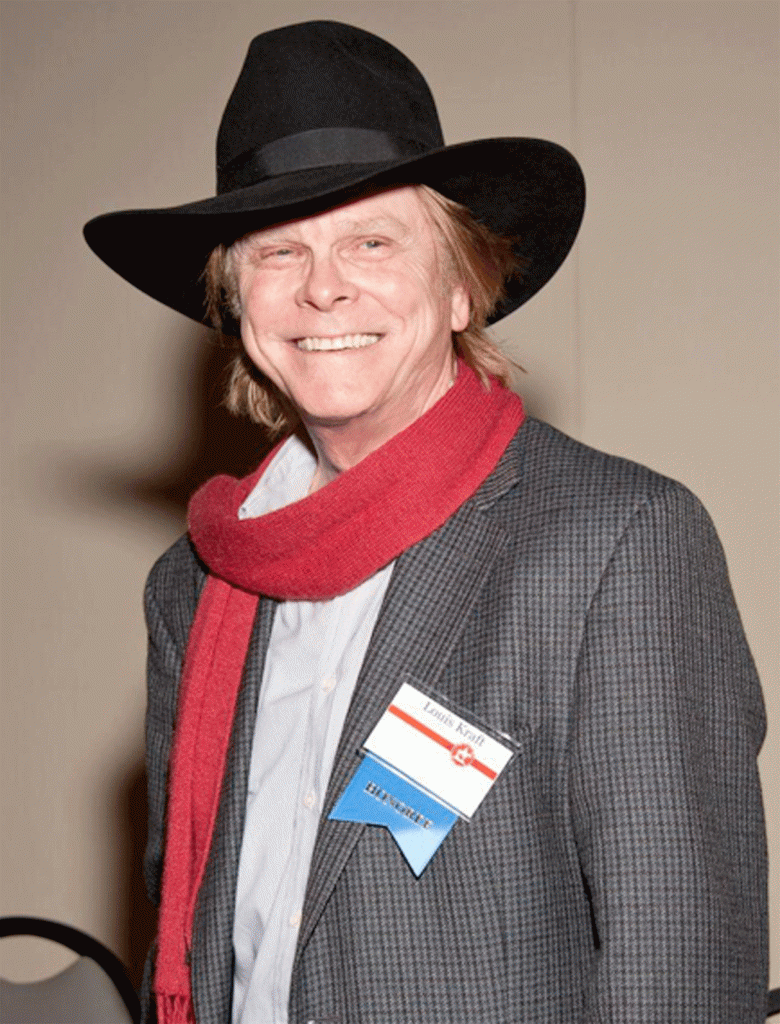
This image dates to April 2012 and the Western Heritage Awards extended weekend in Oklahoma City. My article, “When Wynkoop was Sheriff” (Wild West, April 2011) won a Wrangler, which is a cool bronze statue of a cowboy on a horse. This was a fun time with friends and people that I just met. Even though my connection with Wynkoop is deep and ongoing (and I do publicize our connection), to claim that he is the only un-racial person I write about is a joke. I’ve written two books about Charles Gatewood, one about George Armstrong Custer, and when I complete my trilogy on Errol Flynn I will have written more about him than anyone else. To date I have written one book about Wynkoop (although he will be a key player in Sand Creek and the Tragic End of a Lifeway). Two books are planned on Kit Carson and two on the pirate Francis Drake. Those of you who have no clue of what you talk about—and I’m pointing my finger at a writer who runs off at the mouth without knowing anything—you need to get educated, you need to do a little research, you need to prepare before you say a lot about nothing. Period! (photo © Ownbey Photography & Louis Kraft 2012)
Friends—good friends—became enemies. For all time. LK has been there and done that. Why? How? I don’t know the answer, but with the drop of a quarter good friends, people who I thought were friends until the end of time changed colors, and attacked with a vengeance and a hatred beyond imagination. They were friends of long standing and suddenly they bared their fangs and struck to kill. …
I have not yet survived the shock, or have recovered from their vicious verbal and written attacks of hatred. Most likely I never will. There’s a hole in my life that can never be repaired, never become whole again.
NEVER!
What I have experienced I am certain that Ned Wynkoop also experienced. The shock in my life was not as extreme as the shock that he lived through for he knew people who were murdered and I only deal with egotism, stupidity, and love turned into venom. How can a person I liked and respected for decades turn into a viper whose sole goal was to belittle another’s writing career? How can people that I have been close to create lies and then believe them as truth? How do I—or they—survive this? … We don’t. It’s just like seeing fresh roadkill lying in a broken clump with blood seeping onto the pavement. An innocent life had ended for no reason other than being at the wrong place at the wrong time.
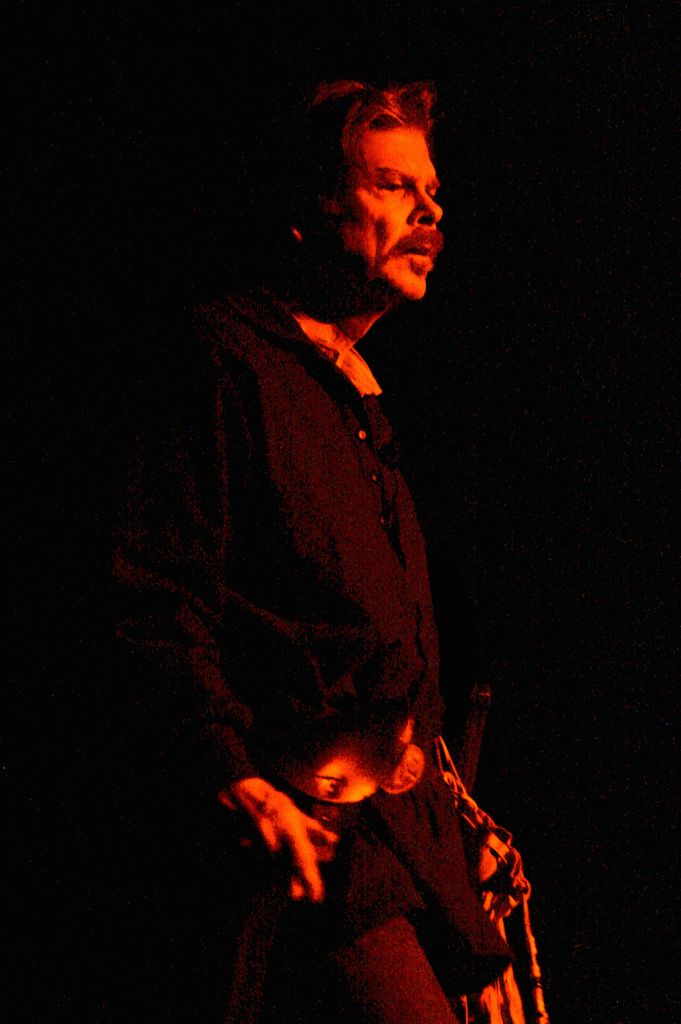
LK as Ned Wynkoop viewing the butchered remains of the Sand Creek dead when he visited the massacre site in 1865, as photographed by my good friend, writer, historian, and editor Johnny D. Boggs in December 2008 during a dress rehearsal in Cheyenne, Oklahoma. (photo © Johnny D. Boggs & Louis Kraft 2008)
These are scenes that I have experienced and I have never forgotten. I’m certain that Wynkoop’s and Byers’ experience was much harsher on both of them than mine has been.
Wynkoop was not me, … nor am I him, yet we are joined across the centuries because of our views on race and racial equality (and not because we had good relationships that flamed out and burned). Does that make him evil … or me evil? Without blinking an eye—No!
Research is mandatory to writing a good book. No real research and a “so-called” nonfiction book is basically bullshit. That is crap, and let me tell you that there are a ton of these pieces of shit published every year. All I can say is: “Shame on these authors!” … “Shame on them!” for their goal was book sales and to hell with truth or reality. You do not want to know my opinion of these cretins for it really isn’t printable. … Ditto the publishers that printed their travesties.
Where am I headed? I’ll tell you …
Suddenly what should have been easy research on Editor Byers has gone belly up. This cannot be for William Byers must be a leading player in my manuscript, even when he is AWOL in book print. He was a major part of my pitch and I have no intention of deserting him or his cause. Trust me. This man had a vision for a new land, and it was a good vision if we view his roadkill attitude of taking no prisoners in print from his point-of-view.
Know this, I don’t give up. I want Arapaho chief Left Hand to be as large as possible. I also want William Byers to be a major presence in the Sand Creek manuscript. … Hint, hint, hint. Ha-ha-ha. … I know the answer but I ain’t a tellin’.

OU Press editor-in-chief Chuck Rankin speaking at the Western Heritage Awards banquet in April 2012. (photo © Ownbey Photography 2012)
Last December I had a great phone conversation with Chuck Rankin, who had initially pitched me on writing about Sand Creek. It took us two years before we agreed upon a vision for the book and then more years for me to create a 37-page proposal (that Chuck reviewed in progress and in which he had massive input) before we finally signed a contract in 2013. … Going into the project I knew I had bitten off a huge bite, but that would be worth all the wrong turns, dead ends, and honestly the struggle to use a select group of players to drive a non-biography to conclusion. … I don’t get headaches; never. That was then. Now is now, and now I get headaches. But then perhaps this is only because I have fallen on my head and cracked my skull open way too often.
I have an angle to follow. It is not where you might think. It is not where I would have ever guessed. But it is close to LK’s desires. My fingers are crossed that I can make my pitch and that my arrow splits the arrow dead center in the target. I’ll soon know, but not you for you, for regardless if it is an LK win or yet another failure you will have to wait—most likely years for an answer. Sorry, but that’s just life in the real world.
But an unforeseen problem
As mentioned above, I failed to locate a biography of William Byers in the Los Angeles Public Library’s 100 branches. Abebooks.com, which I often use for research, also had no hits. Ditto Amazon.com. At the moment I have a zero mark on landing a major biography on one of the most important players in Denver and Colorado Territory’s early years. Why? WHY?
I have some great primary sources on Mr. Byers. Hell, a week doesn’t go by when I don’t have my nose pressed against my computer screen reading an issue of the Rocky Mountain News. Someday this will cause me to go blind. Don’t believe me, read the sucker, that is the RMN, without glasses or a magnifying glass. Byers’ paper that he used to conquer all who opposed his vision is a magnificent document. Magnificent as long as you understand the paper’s stance and viewpoint. … That’s right, for sometimes you must read between the lines or more important question what you have just read.
Heck, the Los Angeles Times is a magnificent newspaper—today, in 2010, and in 1941 or 1937 or before. This does not mean that I buy what the paper has printed in well over a century sight unseen. Actually, just like I challenge the Rocky Mountain News, I also challenge the LA Times, and I do use it for historical research, today’s events, and even the paper’s selection of cartoons, which are first class (and often hit the target dead center).

This is an artistic rendering of the west coast of Costa Rica. It could have been the southern coasts of Spain or France, or, if I eliminated the water and changed some of the colors, New Mexico. … I love Los Angeles. It has more culture and artistic events than anywhere else in the USA, and that includes NYC and Santa Fe, which is my favorite city in America. Moreover, and much more important, Los Angeles has more people of ethnic origin than any city in the USA, and even more important has more Thai people than any city in the USA (and if you add all the Thai population in the other cities stretched across our great country together LA still remains number one). This is a major fact for my lady, and the major reason for us to not leave this great city. Put mildly, Los Angeles is our home and we don’t want to move. That said I constantly study Costa Rica and New Mexico. The future? Someday we’ll know. (art © Louis Kraft 2015)
On 20mar2017 the Los Angeles Times led with “Trump’s immigration plan faces obstacles,” by Don Lee (pA1+). If you read the article and dig, just a little, you will see that the threat is much more than to just immigrants without papers and to immigrants with no criminal records and are in the U.S. as it offers them a much better life. … Actually the threat is frightening and it is much larger than you might expect.
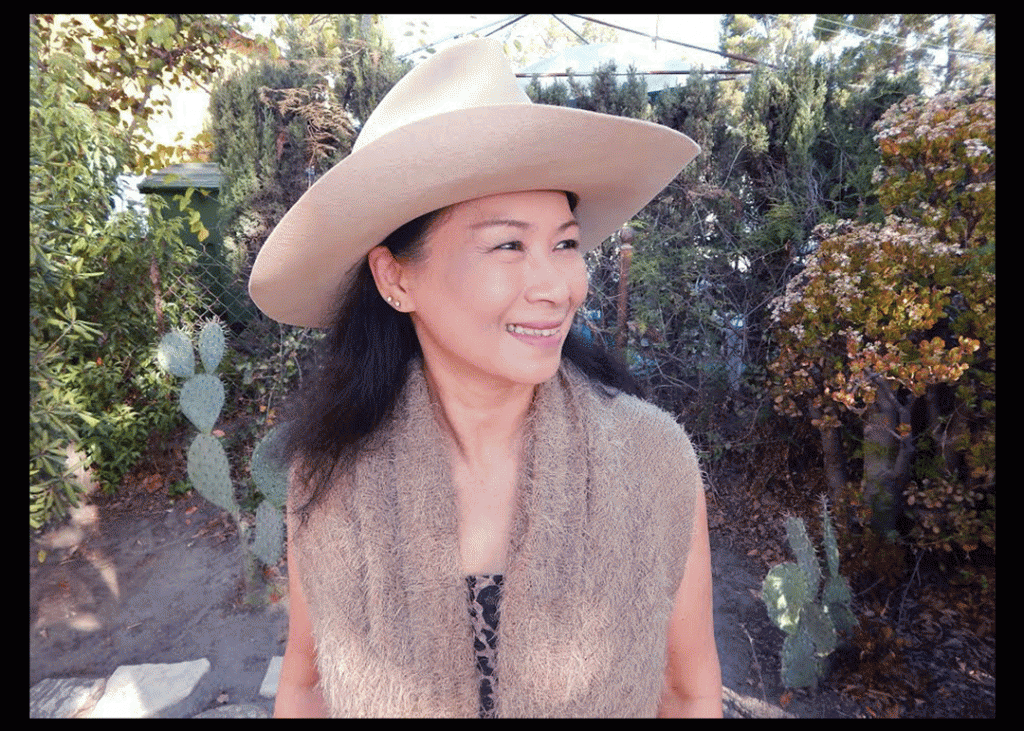
This is one of my favorite images of my cowgirl, my lady, my best friend, my love, and my wife (although she wasn’t my wife when I took this photo in the front yard of Tujunga House on 7nov2013). This photo is framed and is placed in a prime position on my desk. (photo © Louis Kraft and Pailin Subanna 2013)
In my freelance writing I try to challenge everything that I discover and read and discuss with my network of writers, historians, editors, artists, and other creative people. The thoughts and ideas are lively. Many have helped me, and I hope that I have helped some of them. I use my network to not only widen my knowledge but to keep up our friendships. Besides some of what I learn or now understand might eventually make it into a talk, article, or book. … I also try to do this with my every-day life and world, but most of this I do on my own. I believe that eventually the United States will regain its senses and most of this ugliness that is currently in vogue will begin to fade away. If perchance it doesn’t make a major U-turn, most of my adult life will have been lived in vain and all that you and I have seen change for the good will have been for naught. What does that say about our time walking this earth? Without naming names my current view of our future is frightening.
A William Byers strikeout
At the moment I feel like one of the Major League Baseball players that whiff (that is strike out) 200 or more times every season while justifying their failure to hit the baseball and their piss-poor .245 batting average means nothing as they belted 37 balls over the fence (that is 37 home runs). Give me a break! I’ve seen great ballplayers perform on TV and in person, and there aren’t many that are great. One was Duke Snider of the Brooklyn Dodgers (who, and luckily for me, moved to Los Angeles when the Dodgers deserted Brooklyn, New York, after the 1957 season).
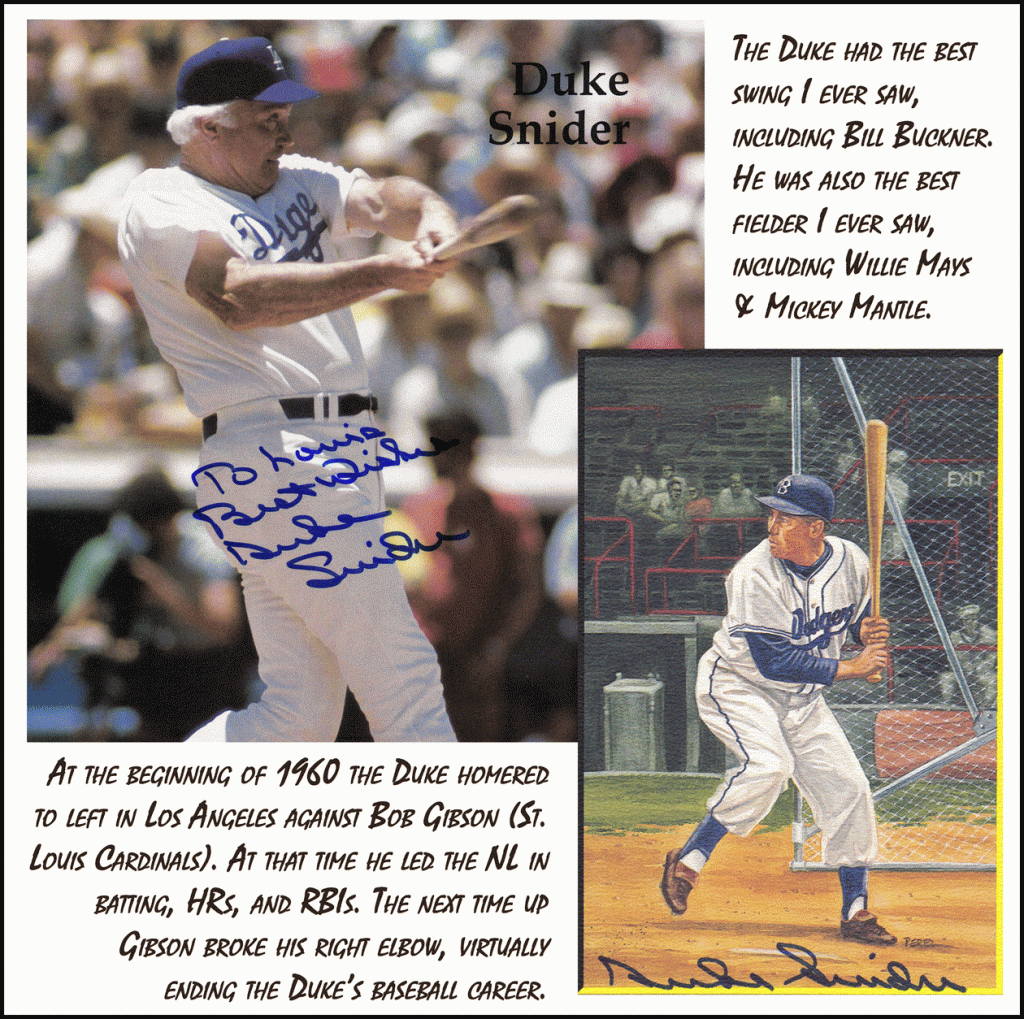
The signature to LK was on the cover of a magazine that printed a feature on the Duke by yours truly. I would write numerous articles about him, but when I pitched him to co-author his autobiography I stuck out for he had already contracted with writer Bill Gilbert. … I spent a fair amount of time with the Duke during a few years in the 1980s. He was a good man, gracious, and I treasure our time together. Not bragging, and I’m not a big fan of celebrity signatures, but I’ve got a lot of the Duke’s. (A side note on another great player, Barry Bonds: His swing was so compact and smooth. Regardless if he took drugs or not and I’m not going to state what I believe about this, he belongs in the Baseball Hall of Fame. Yes, he certainly grew larger during the second half of his career, and the extra muscle certainly helped his home run output. But he still had to hit the baseball, and if you’ve never attempted to hit a ball that is coming at you at 90+ miles per hour you have no idea of how difficult it is to do.)
I hate feeling like that ball player who hits .245 when he’s lucky. And I’m not talking about money or poor performance. Rather I’m racking my brain trying to figure out how I’m going to make Byers fully dimensional. … At the moment I have more strikeouts than hits, and this isn’t acceptable.
I know that a Byers’ bio exists and I hope that I’ll be able to see it. If not, Mr. Byers won’t get too much press in future LK blogs. A shame, for it would be fun to challenge him at times. And especially so, since I already know that he wouldn’t meet me on the field of honor at 10 paces with revolvers in our hands—something that John Simpson Smith would not have blinked an eye before making or accepting such a challenge.
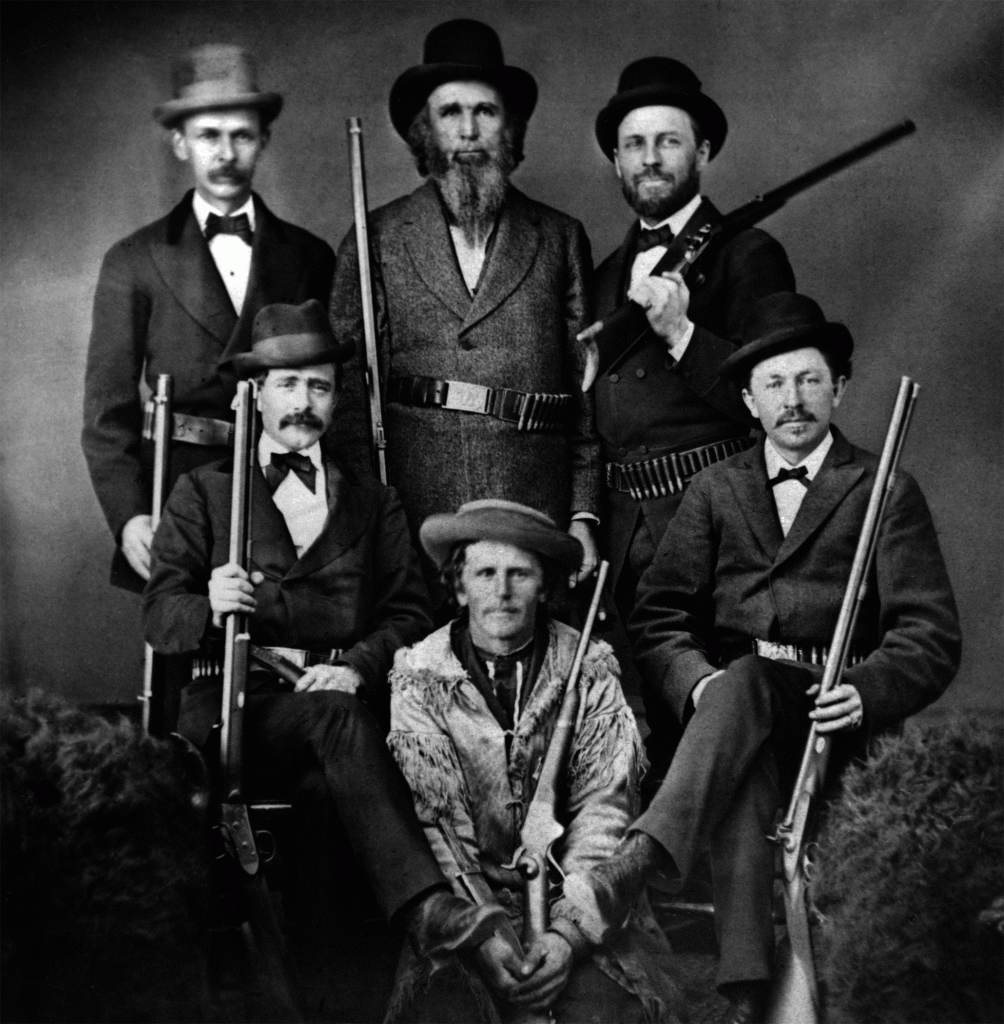
This image was published in “When Wynkoop was Sheriff” in the April 2011 issue of Wild West. William Byers is standing in the upper right. This article was almost never published. When I saw a proof I wasn’t pleased. It had but two images of Ned Wynkoop in the feature, and the portrait on the first page of the article was dinky. I had suggested most of the images in the article, including two of William Byers. I spoke with the person in charge of the images and told her that I wanted the above group shot removed so that the portrait of Wynkoop on the first page could grow in size. She told me that the design was complete and nothing could be changed. I restated what I wanted. She refused to budge and the phone call went downhill. Finally I said that if the portrait wasn’t enlarged it wouldn’t appear in the magazine. She told me to talk with Greg Lalire, and then hung up. Greg L is a great editor, and probably the major reason behind Wild West’s success for decades. He is also my friend. I didn’t call him. Two days later he called me and asked if I had a problem? “No,” I said, “but one of your coworkers has a problem.” He already knew what was going on; still we talked it through. … I want to say this up front, Greg has done everything possible to print my stories over the years, and he didn’t desert me at this critical time. … A few days later he called again and said that he had cut the other image of Byers. I saw another proof. My art had grown but not completely—still I was pleased. The Wynkoop article saw print and out of nowhere it won a major award, the Wrangler.
Does this make Byers a coward? Absolutely not! He was a brave man who put his life at risk day in and day out. … A little change of subject: Los Angeles has returned to its modern-day version of Dodge City. That is people are again gunned down or knifed to death at an alarming rate. I haven’t been saving these articles in the LA Times for it seems that almost every day another one or two or three or more people die violently (and many of them are innocent bystanders, and that includes infants, children, women, and men). Will their murderers be apprehended, brought to trial, and convicted? The answer is sadly not always yes.
This is a sad state of affairs, but this is nothing when compared to the dark-dark days that California will soon face. Although the Golden State isn’t a country I’ve seen it listed as the sixth richest economical area in the world. Well that bold claim may not hold up too long if the presidential prejudice and anger that is aimed at destroying its economy becomes reality. … That said, I’m totally against California becoming a separate country (as many idiots are proposing and pushing to get onto an upcoming ballot).
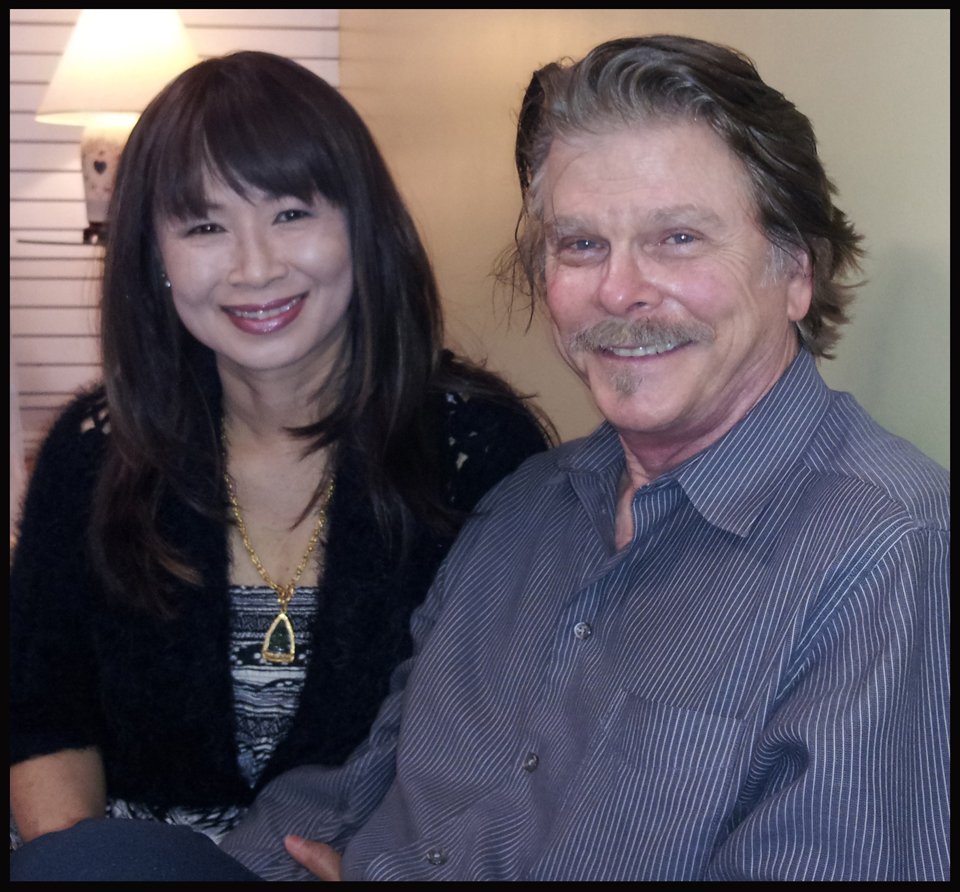
I have a lot of favorite images of my lady, and some of them are two-shots. This photo is one that I really like (it is framed and in our living room). This image dates to 13nov2013. We were enjoying the opening of the Lily Pad Thai Spa & Massage in Sherman Oaks, California. For the record, we were sitting on the floor. (photo © Pailin Subanna and Louis Kraft 2013)
Folks, the country of California is a joke. It is also a frightening possibility for those of us who love the USA and are thankful that we live in the United States regardless of how bad and racist our land has become in just a blink of time.
A return to the Sand Creek manuscript in a totally different direction
The young Cheyenne woman (she was in her early-to-mid-teens at the time of Sand Creek) Mo-nahs-e-tah, and this is the phonetic spelling and pronunciation of her name (I say this for often her name has been written as Mo-nah-se-tah (and other variations), which is/are wrong). Dr. Henrietta Mann, a Southern Cheyenne, who’s entire career has been one of exceptional achievement, including being one of the founders of the Cheyenne [and] Arapaho Tribal College in Weatherford, Oklahoma, shared this with me in 2012.
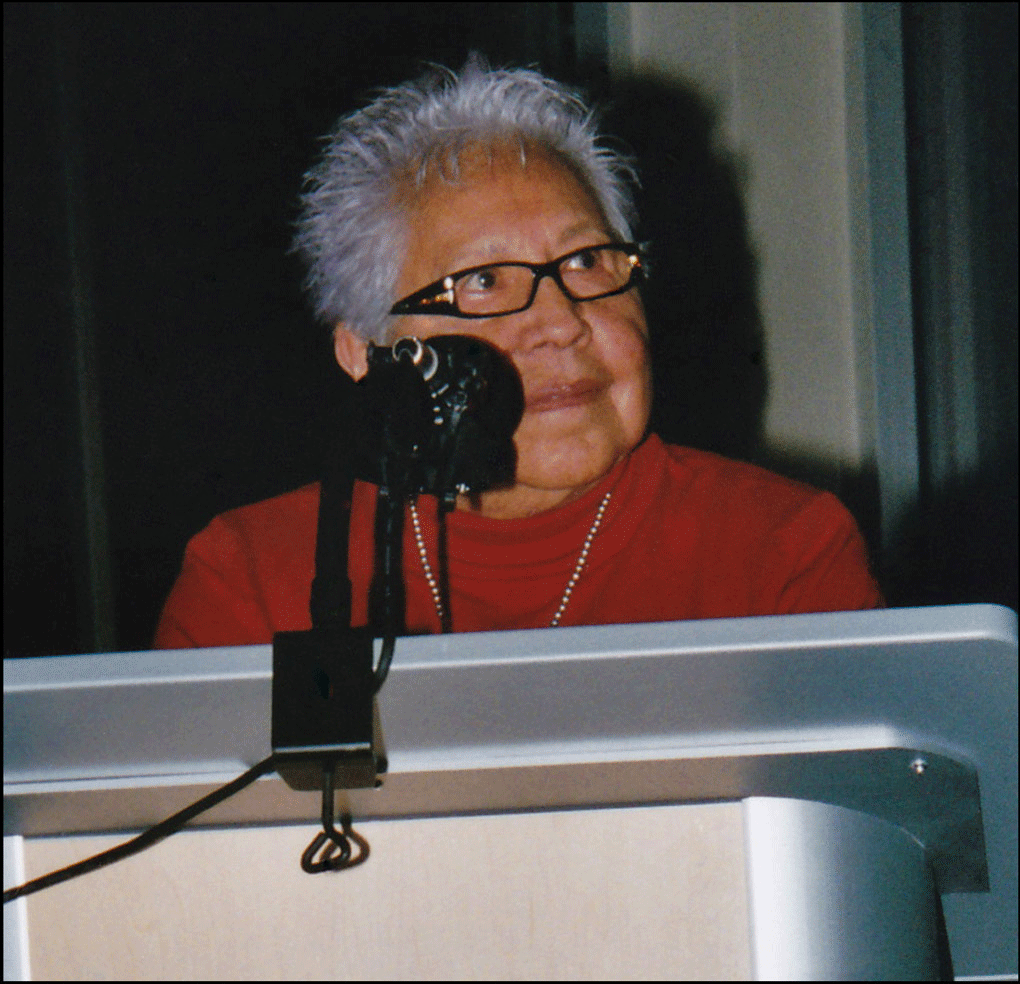
Dr. Henrietta Mann speaking at the Washita Battlefield NHS symposium on 6de2008. (photo © Leroy Livesay 2008)
I met and became friends with Dr. Mann—Henri to me—at the Washita Battlefield NHS in December 2008. … In April 2012 we smiled and joked, we shared gifts, and we talked about serious subjects when I drove to Weatherford to visit her in her office at the college. She ordered lunch in and our time together continued with a mix of good and bad.
The Cheyennes are unfortunately on the bad side (if you’ve read my writing or heard my talks or seen my plays you know why). I’m not on that “bad” side; actually I’m on the opposite side. The Cheyennes in the 1850s, 1960s, and beyond, were on the good side. Although the word wouldn’t exist until the end of WWII, they faced “genocide.” Genocide! White people craved their land, and they did whatever they could to secure it (a better word is “steal” it). … And this included murder. Of course, when the Cheyennes and their allies fought back they were reported as “vicious savages who murdered and raped.”

The lady 2nd from the left is Mo-nahs-e-tah, and I am certain of this. She is holding her child who was pure Cheyenne. Prior to when this image was created she accompanied George Armstrong Custer on his mission of peace on the Staked Plains of the Texas panhandle. Her child, which was then an infant, did not accompany her. I have used a full view of this image in Custer and the Cheyenne and in Ned Wynkoop and the Lonely Road from Sand Creek. … My great friend and bro for all time, Glen Williams (who is one-quarter Cheyenne), gave me this print of Mo-nahs-e-tah, and it is now part of the Louis Kraft personal collection. … During my visit with Henri in 2012 I asked her how she would phonetically spell and pronounce Mo-nahs-e-tah’s name. She gave me the above information.
When your total lifeway is at risk, and that includes your lives, what are you going to do?
FIGHT! Or in the case of Arapaho Left Hand, and Cheyennes Black Kettle, Lean Bear, and White Antelope they would do everything possible to keep the peace between the races with words and not weapons.
Does this make them a “savage?” Or did this make those who refused to fight for freedom without weapons traitors to their own race? The answer to both questions is: No!
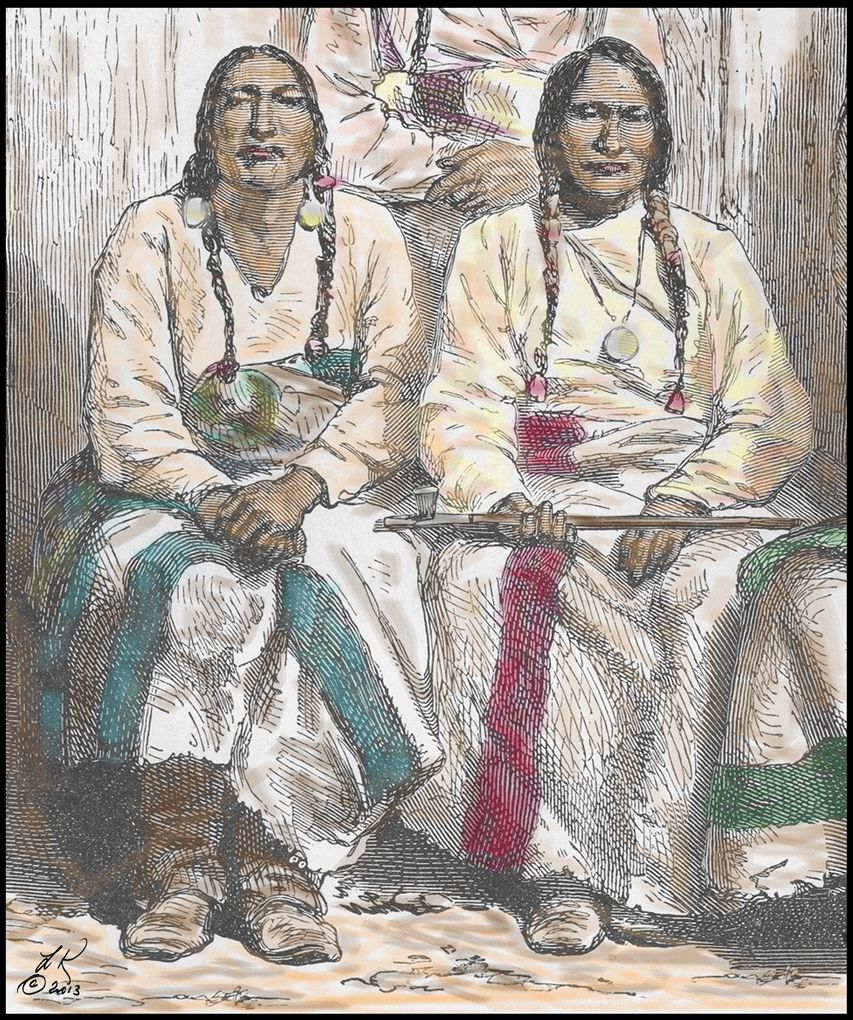
LK art of Bull Bear, the great Dog Man chief, and of Black Kettle, who, in my opinion was the greatest Cheyenne chief of all time. (art © Louis Kraft 2013)
Until Sand Creek and the Tragic End of a Lifeway goes to press I will struggle to define and document the Cheyennes (and to a lesser degree) the Arapahos lifeway and history. This time in their lives, this critical time in their lives must be recorded. And it must not be forgotten. … Also it must be recorded with an unbiased opinion.
I know that Mo-nahs-e-tah was at Sand Creek on 29nov1864, and I know that she escaped, but that was it. Now, thanks to my good friend, Gary Leonard, who is very knowledgable about this lady and the Cheyennes, I now know that she did not make her run for freedom that winter day before a soldier’s ball wounded her. Do I have enough to write about this? That is a big question at the moment. Perhaps Gary and I will be able to open a conversation wherein we can share and discuss, confirm some facts, and learn more about her. I hope so; otherwise this would be a tragedy for me.
I can’t begin to tell you how difficult this is to realize. Unfortunately this problem is generally the case, and that is that the victors write the history, and the losers’ stories are forgotten or ignored or buried. This should not be; it should never be!
As previously stated …
I have to complete Sand Creek and the Tragic End of a Lifeway and Errol & Olivia. Fear not for I will do this. Know also that I am one tough cowboy. I will outlive my ladies for I must protect them, I must keep them safe (especially Pailin and Marissa). … This means that you will endure decades more of my writing. Smile, for you have good—or bad—reading a comin’.


